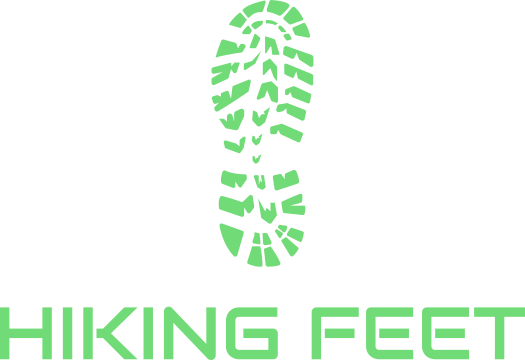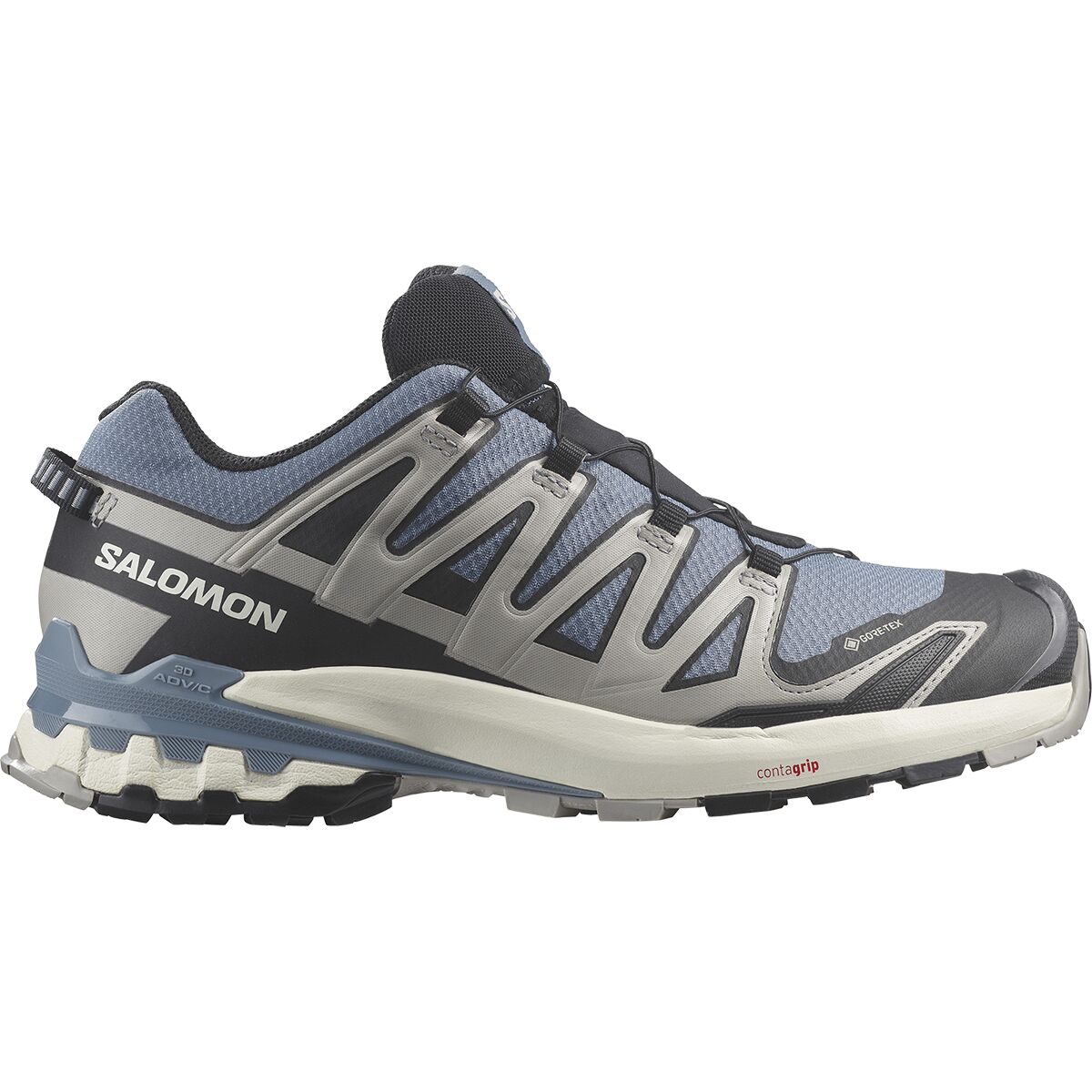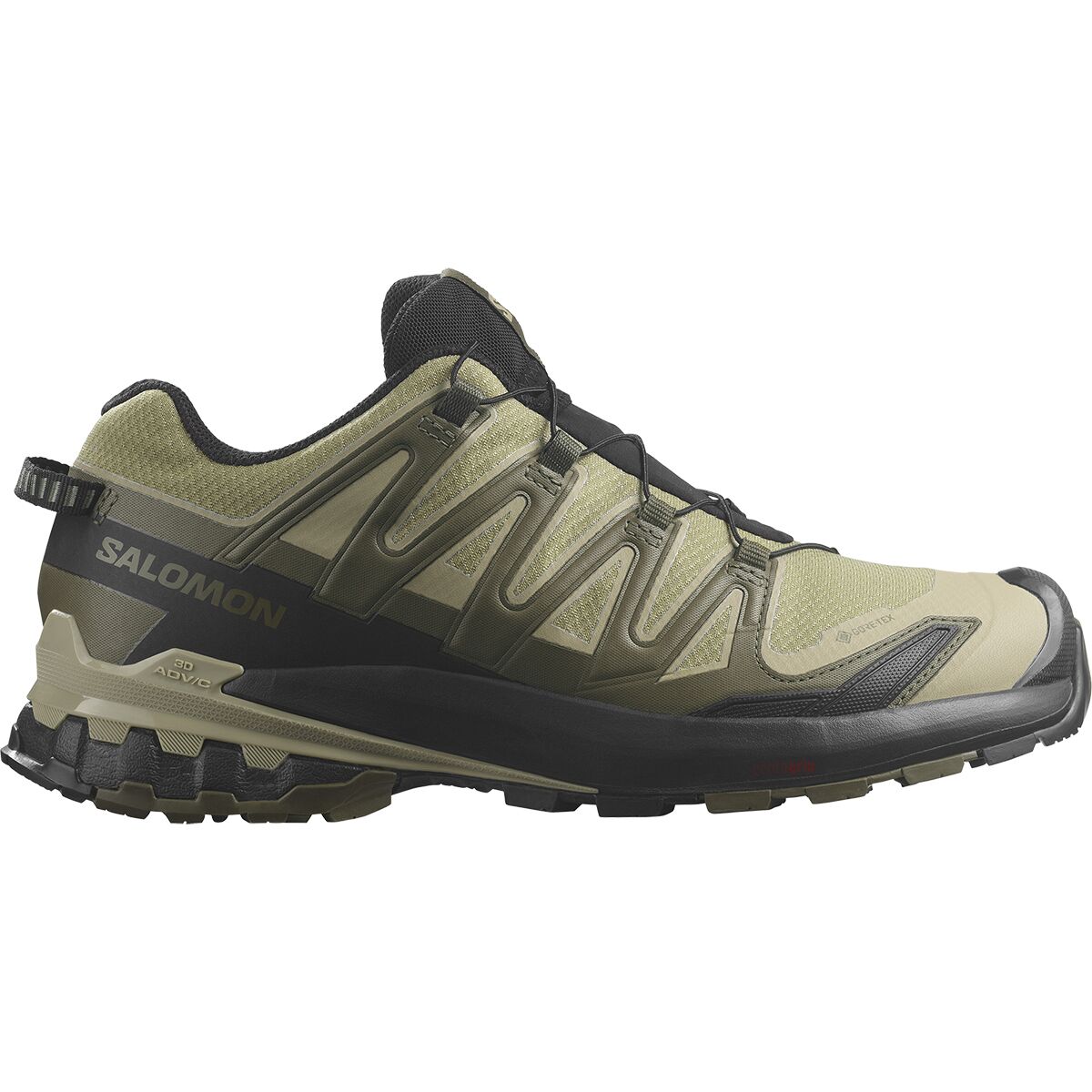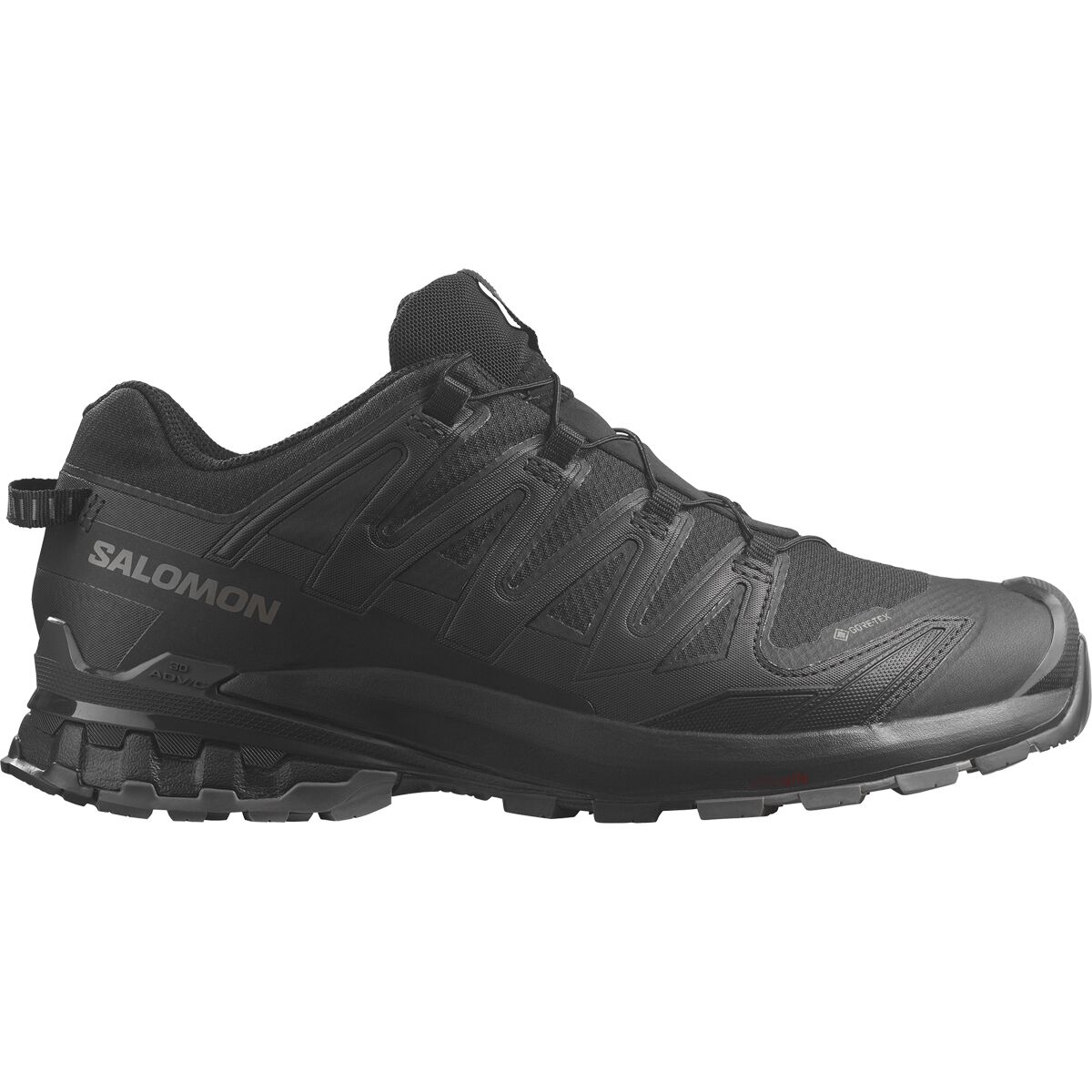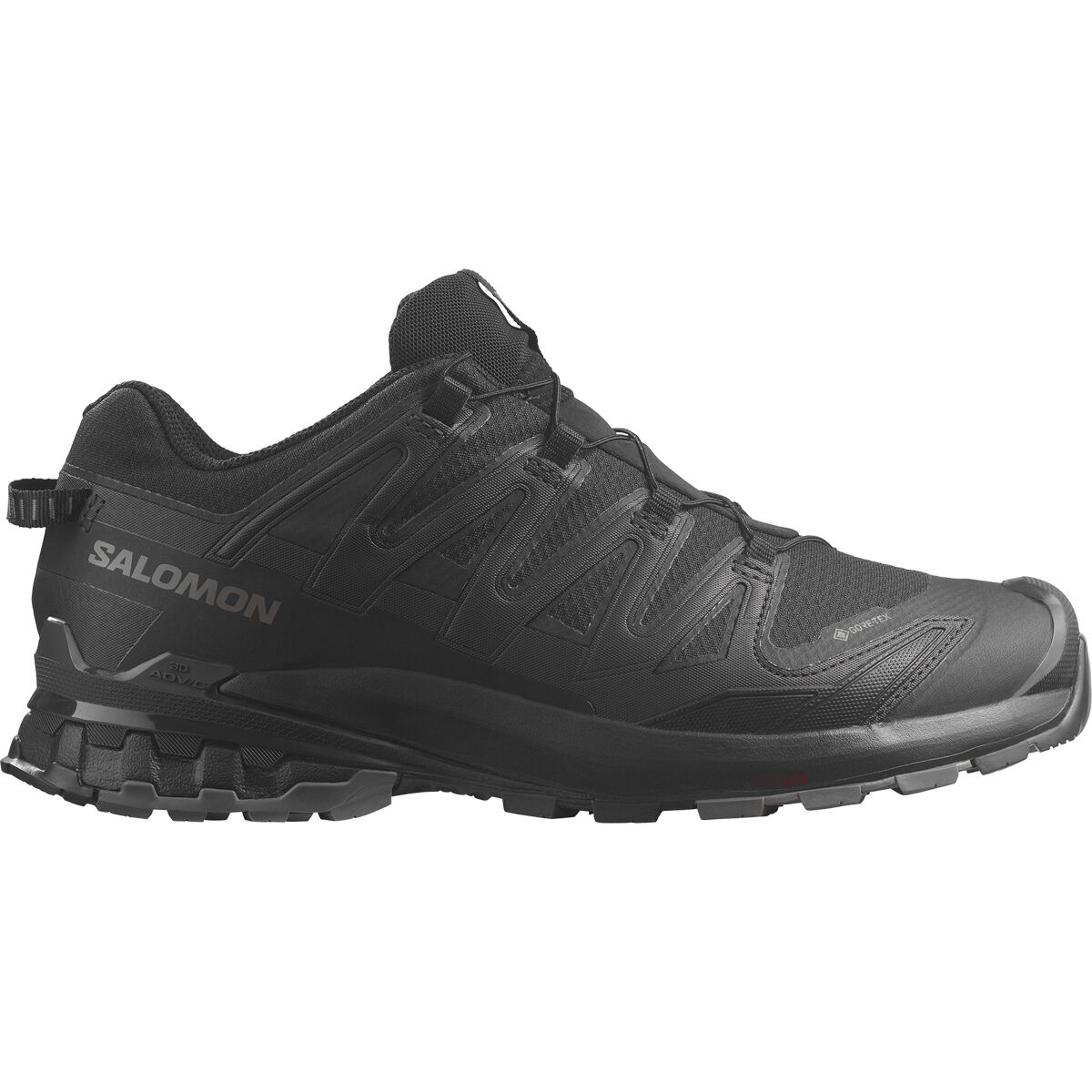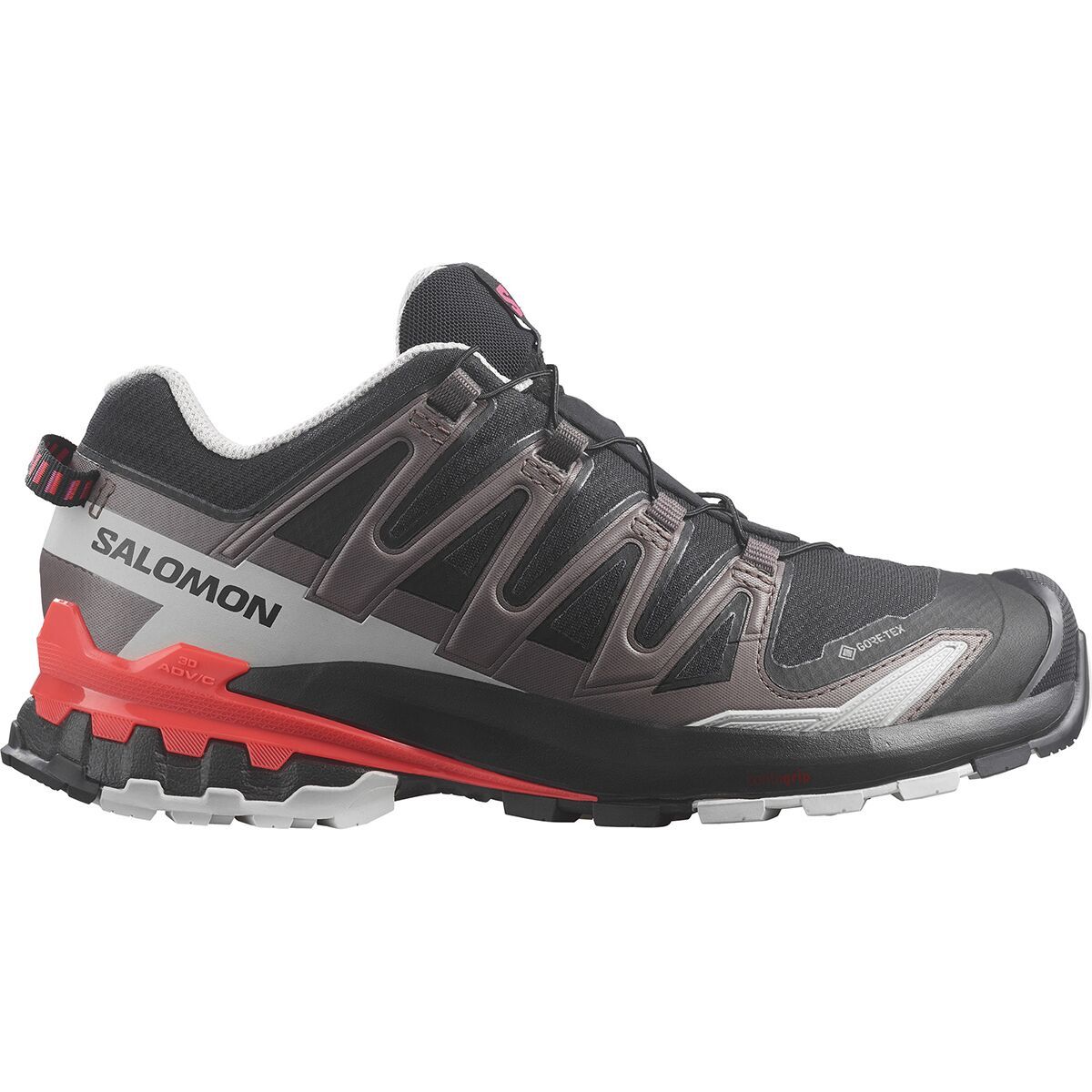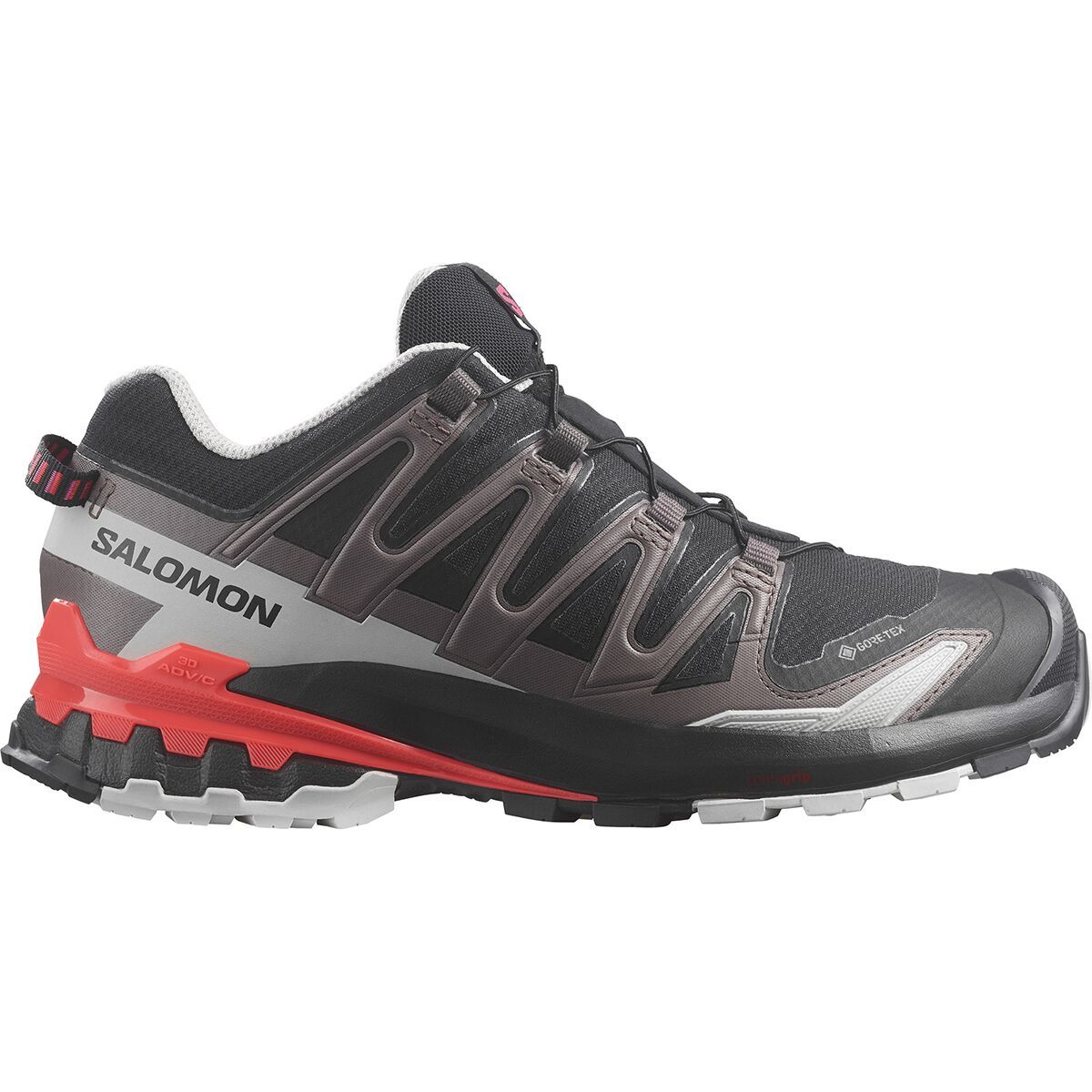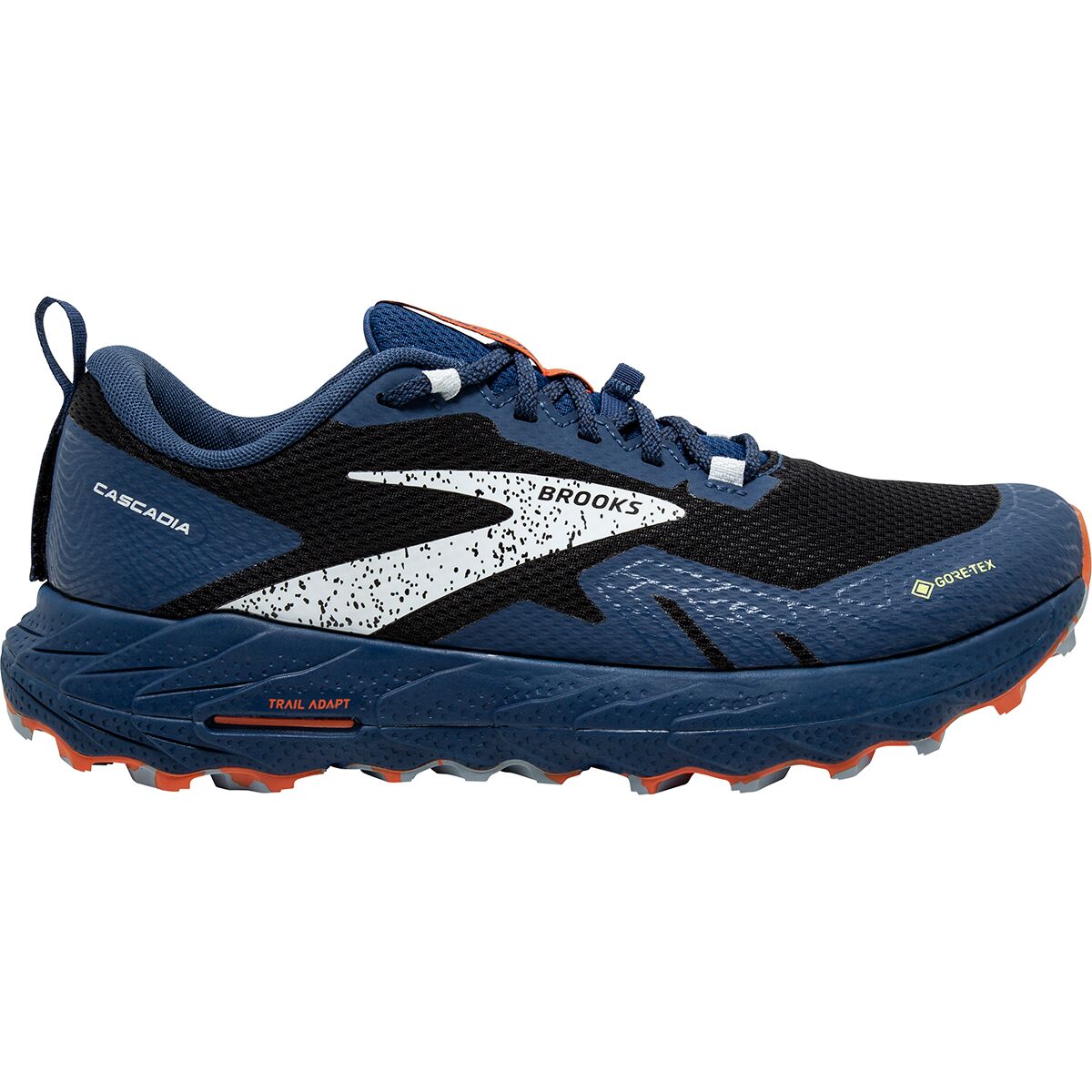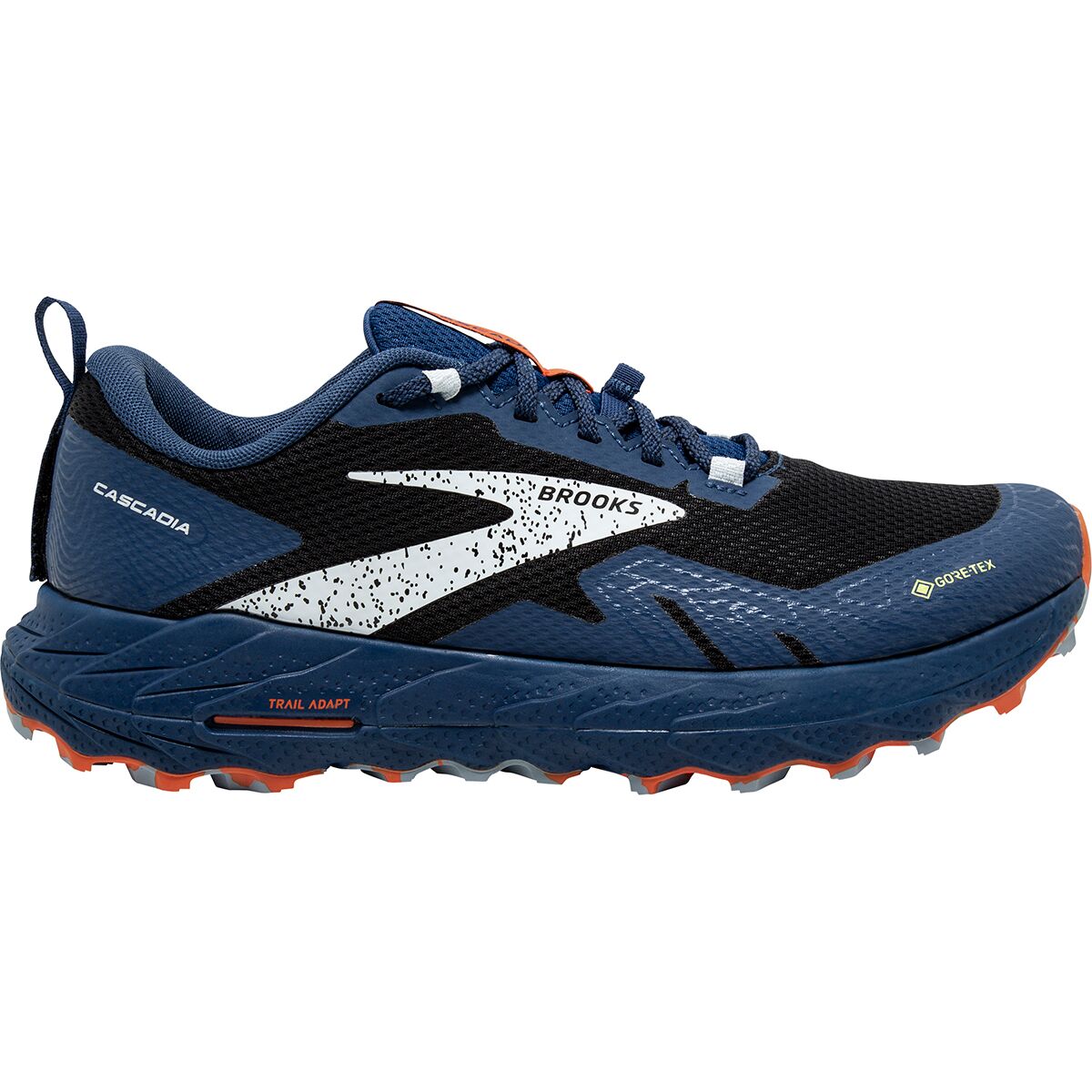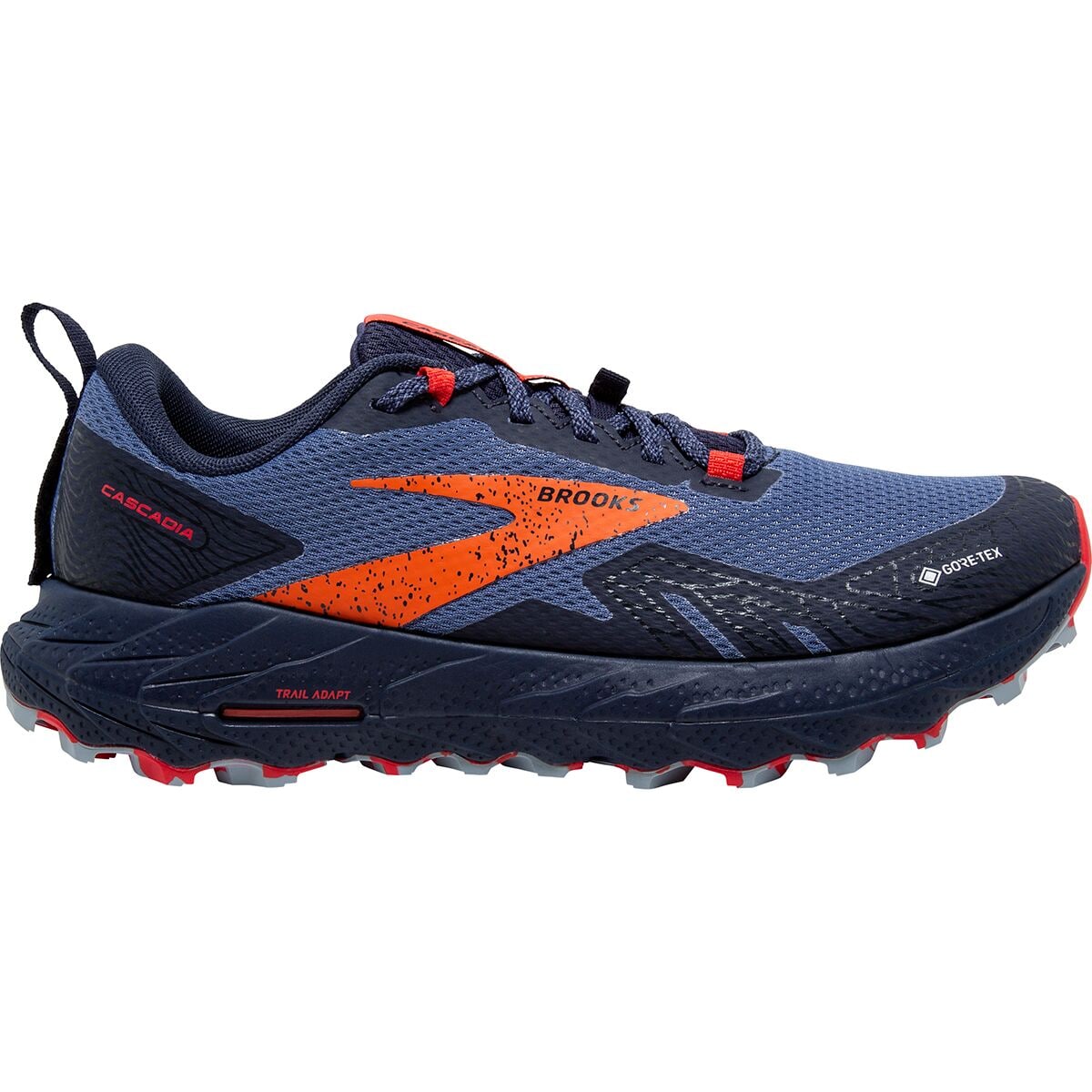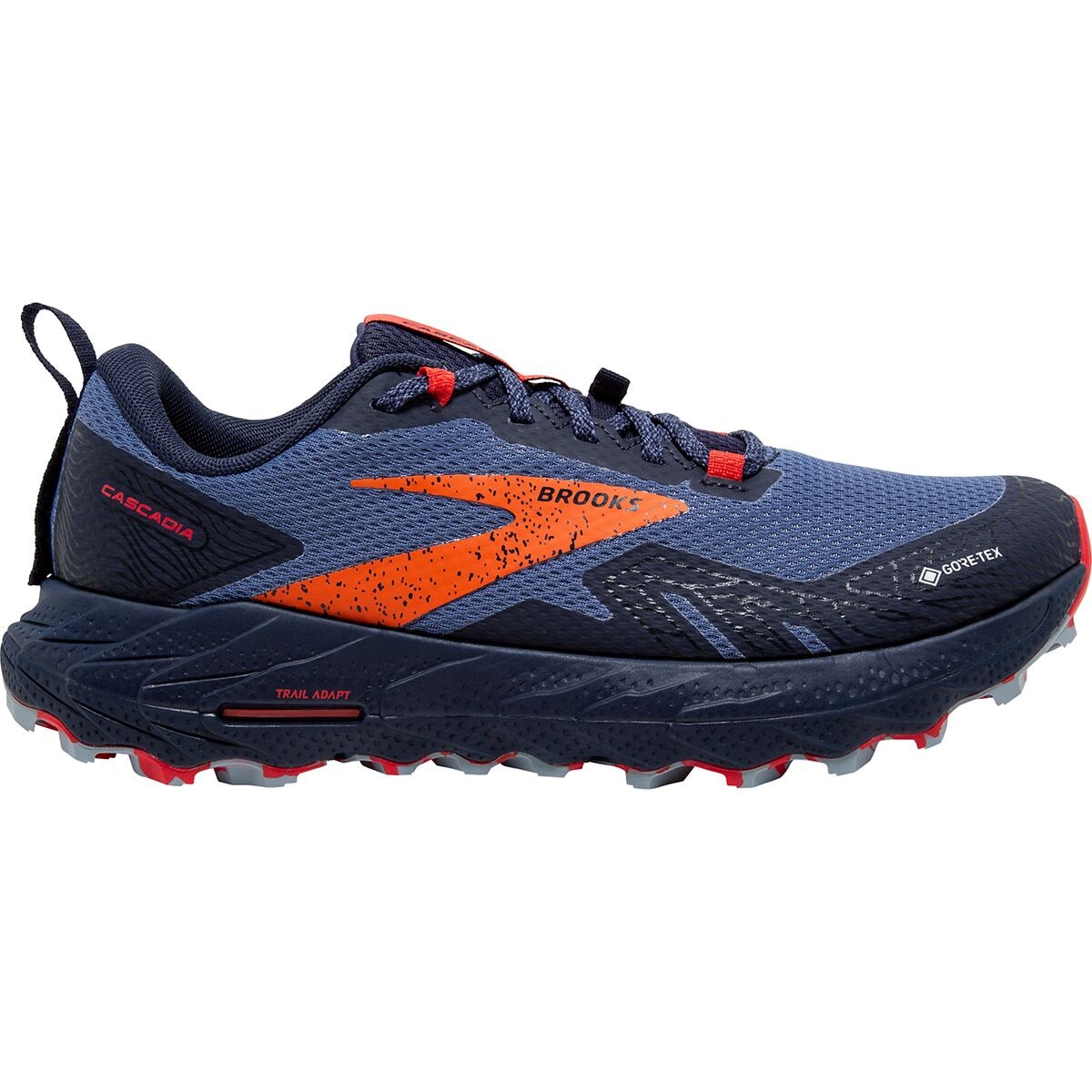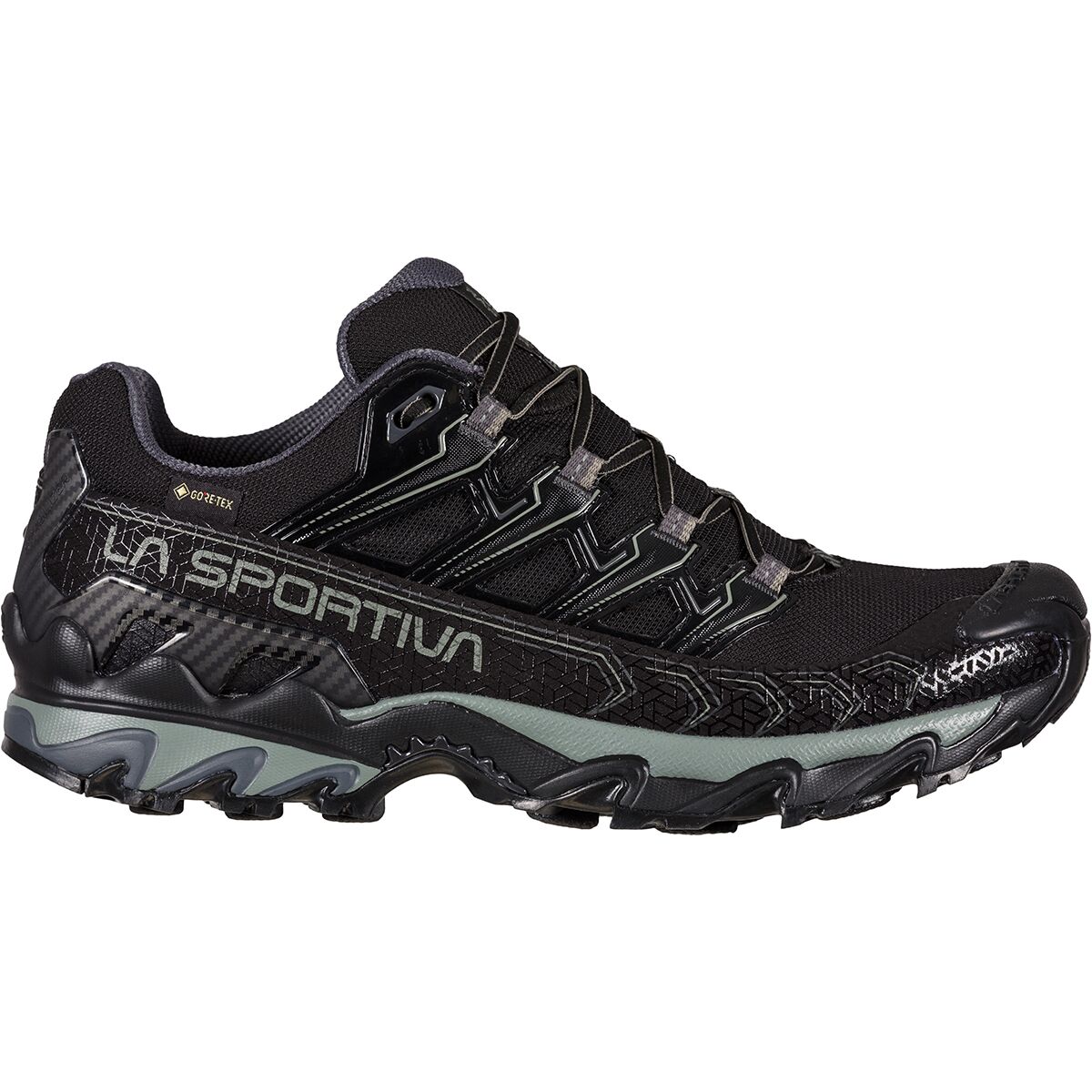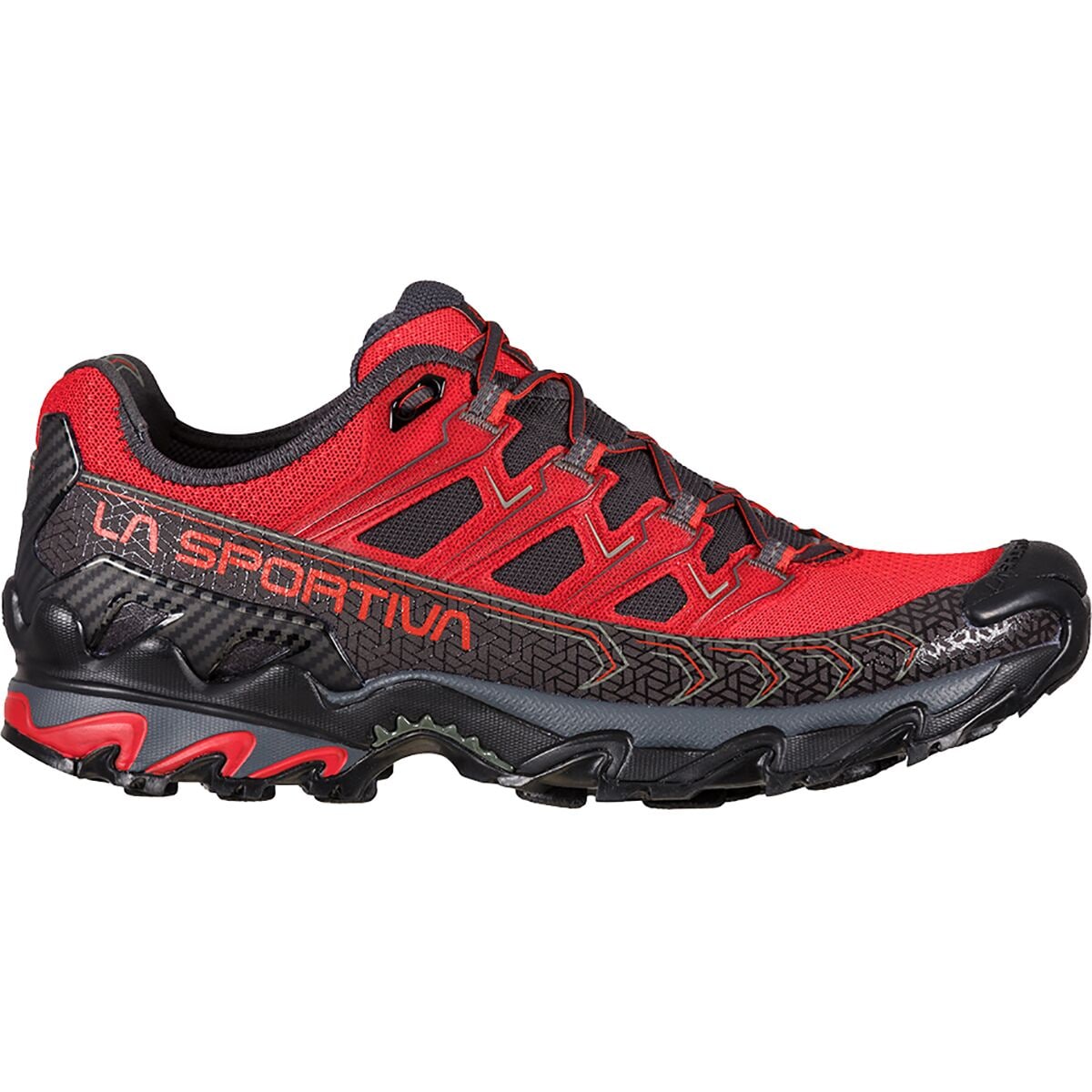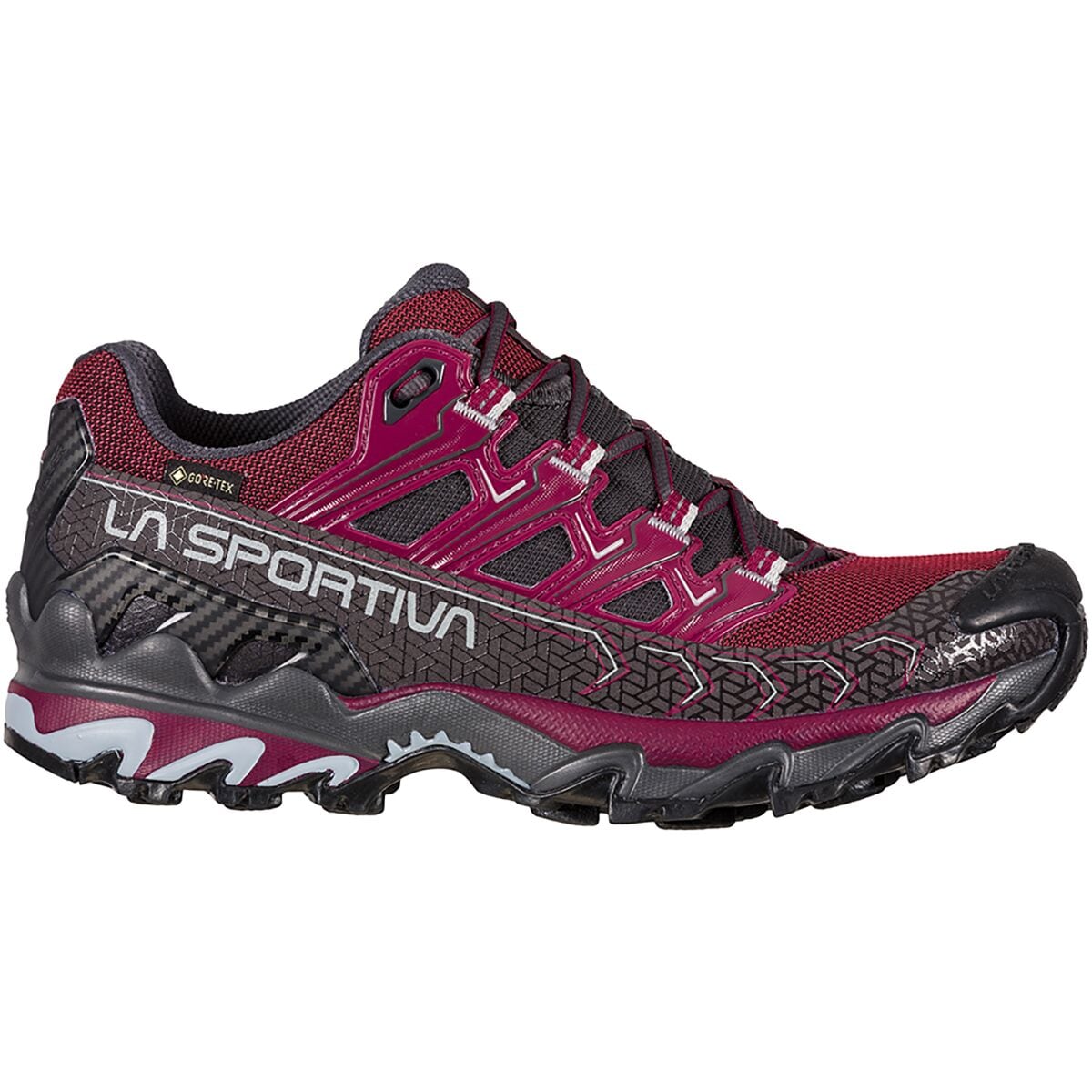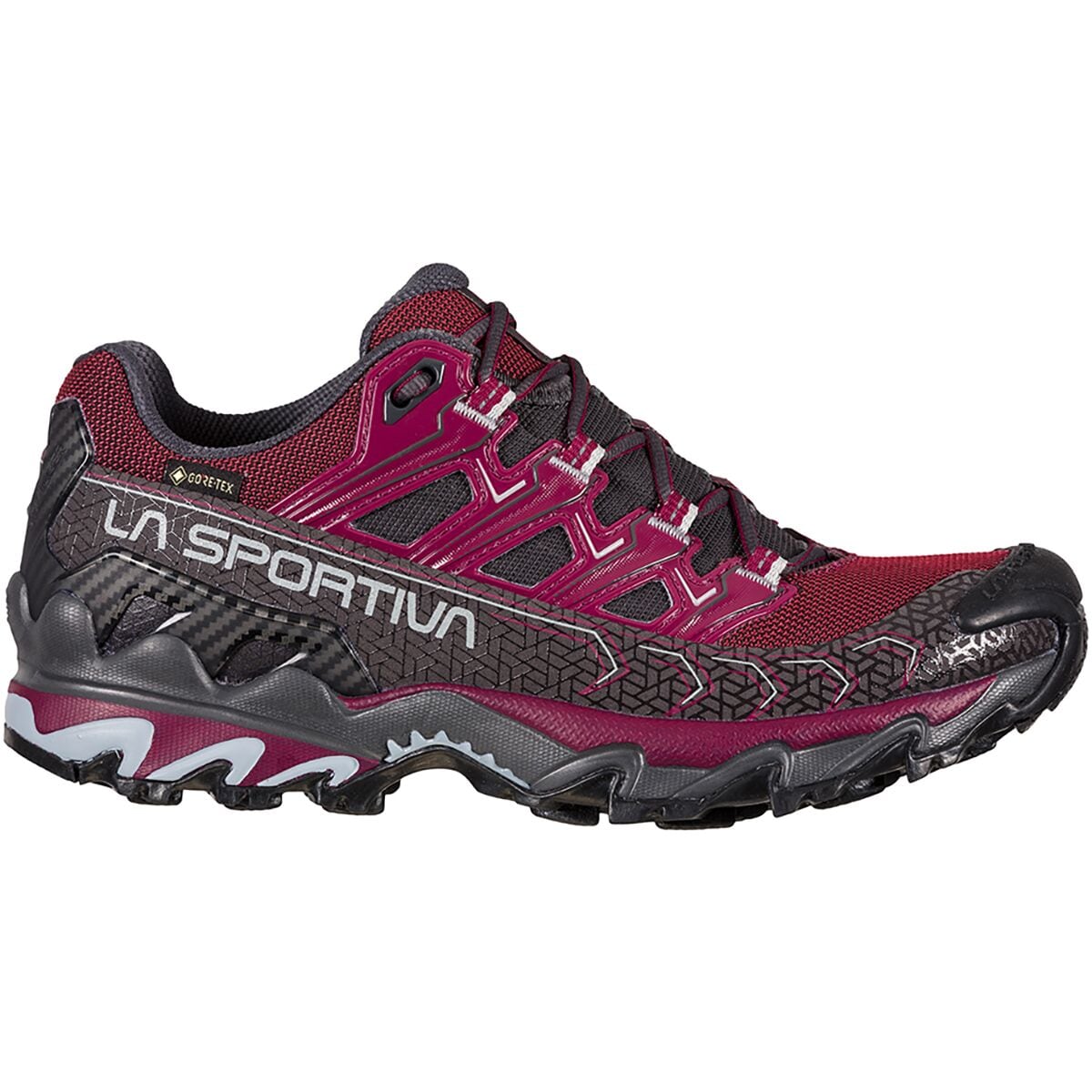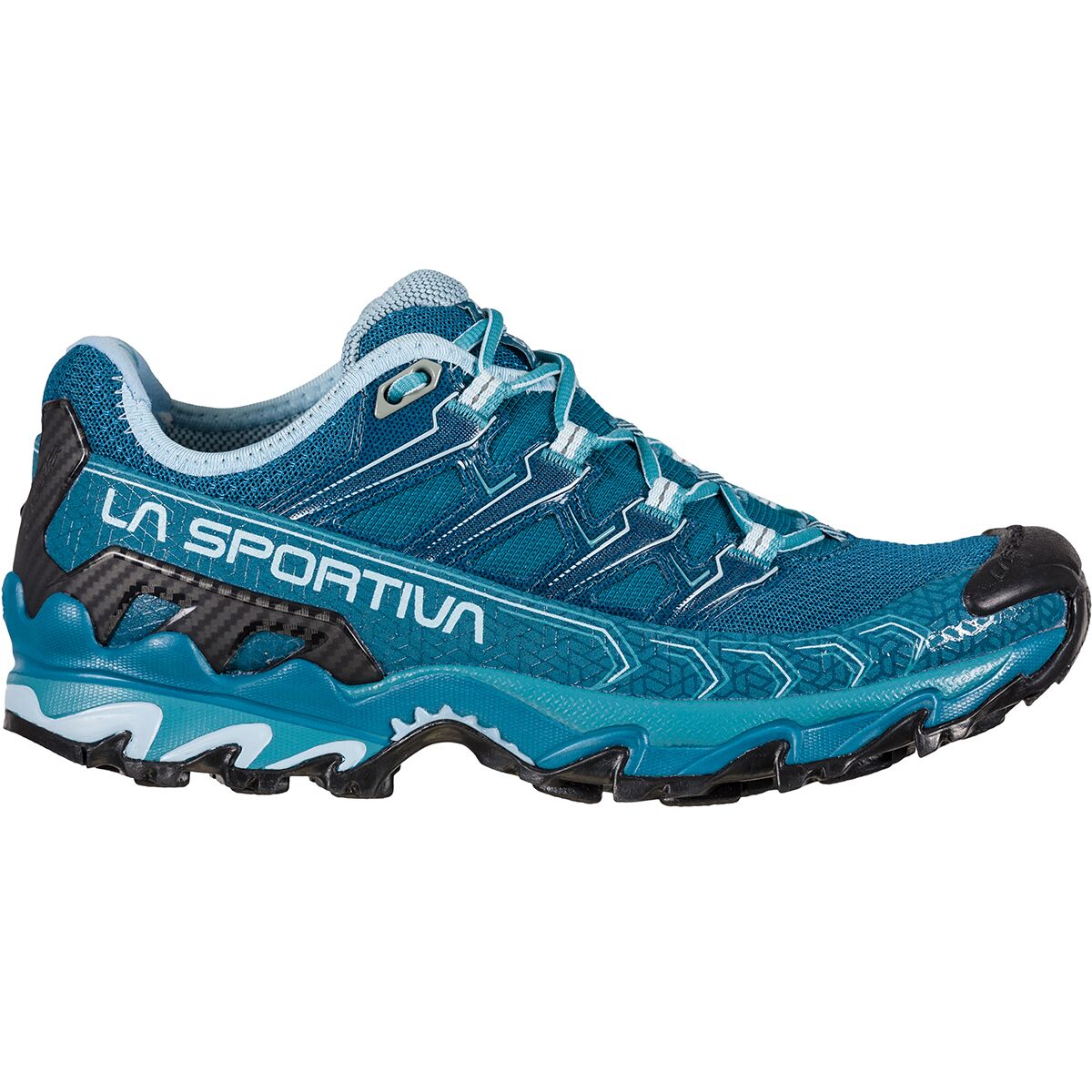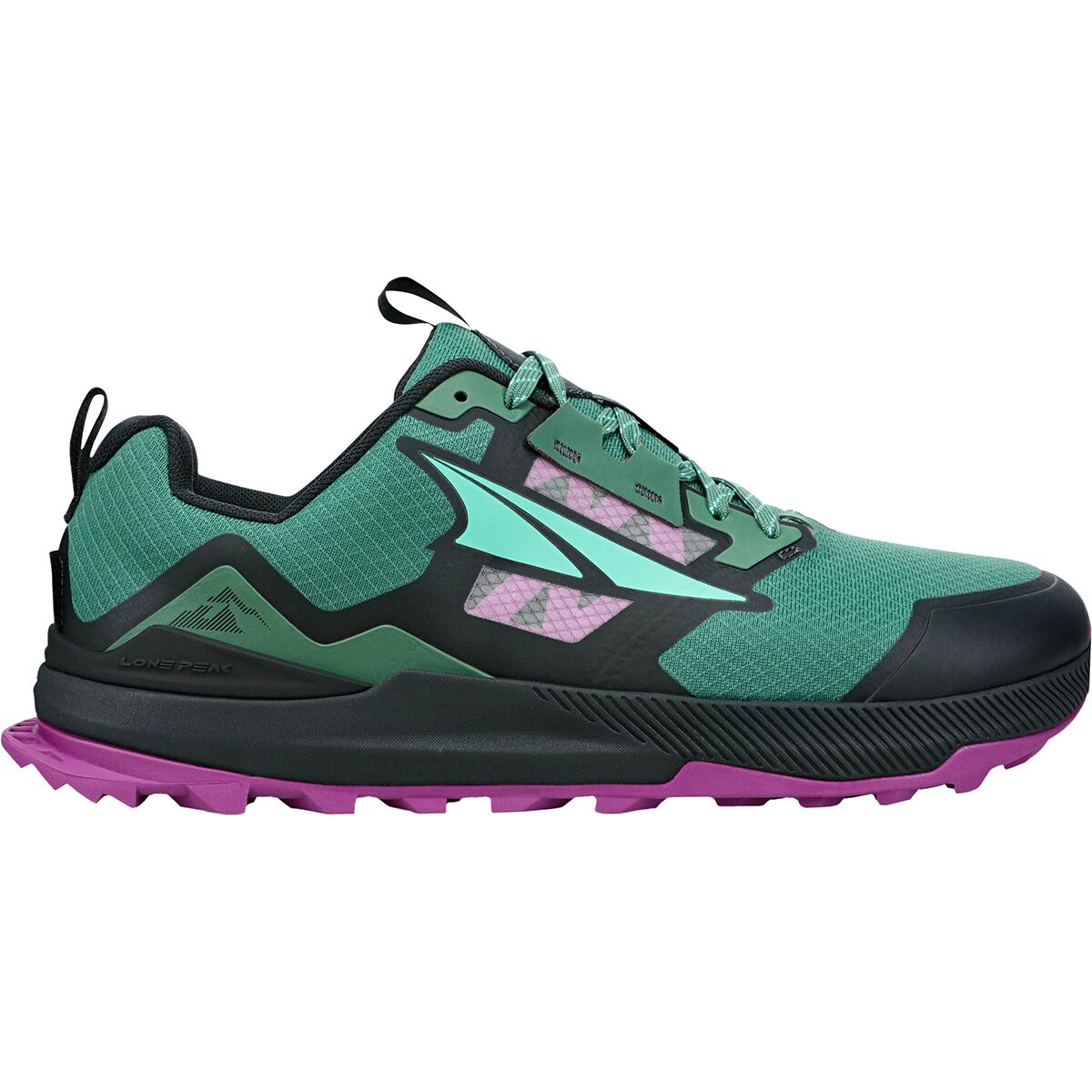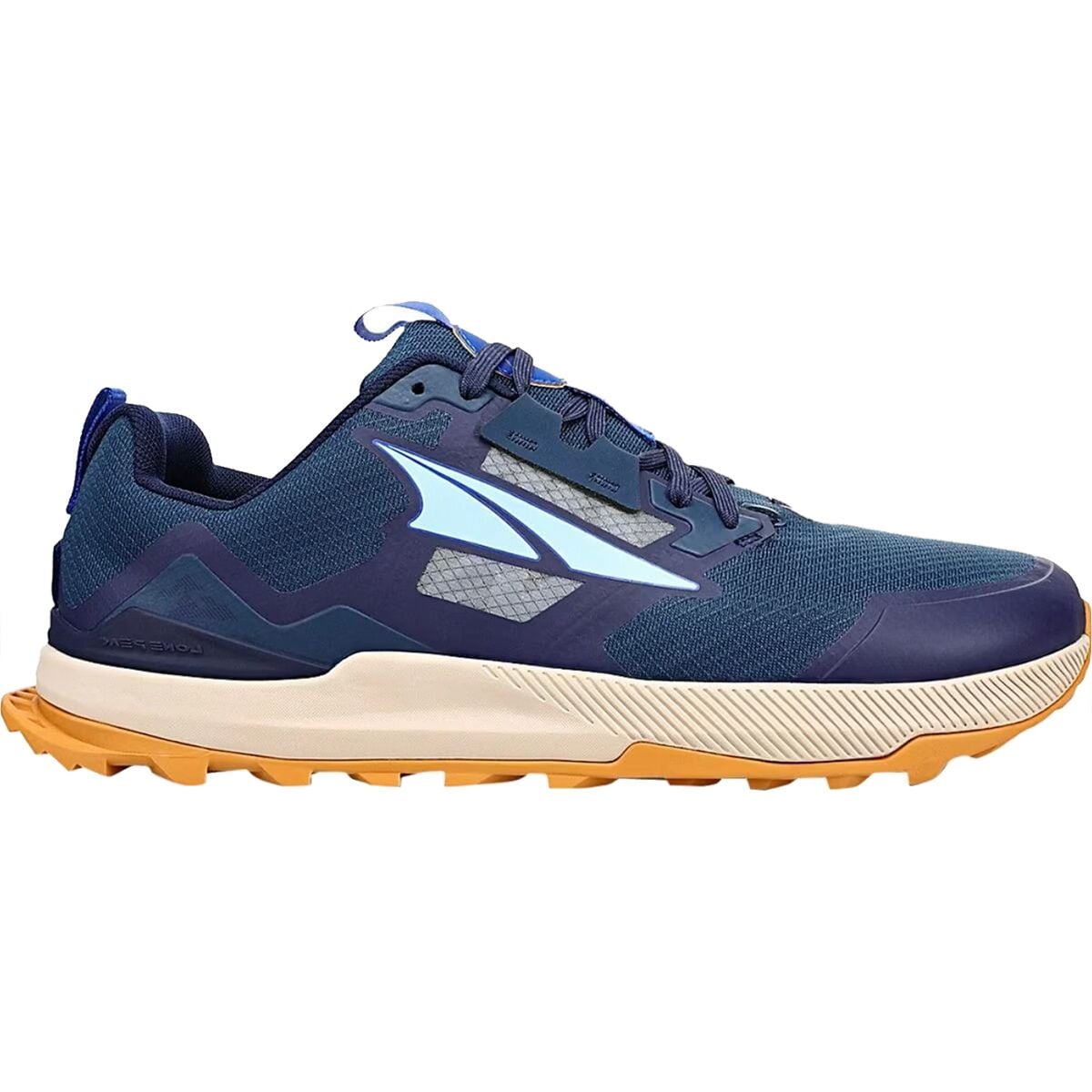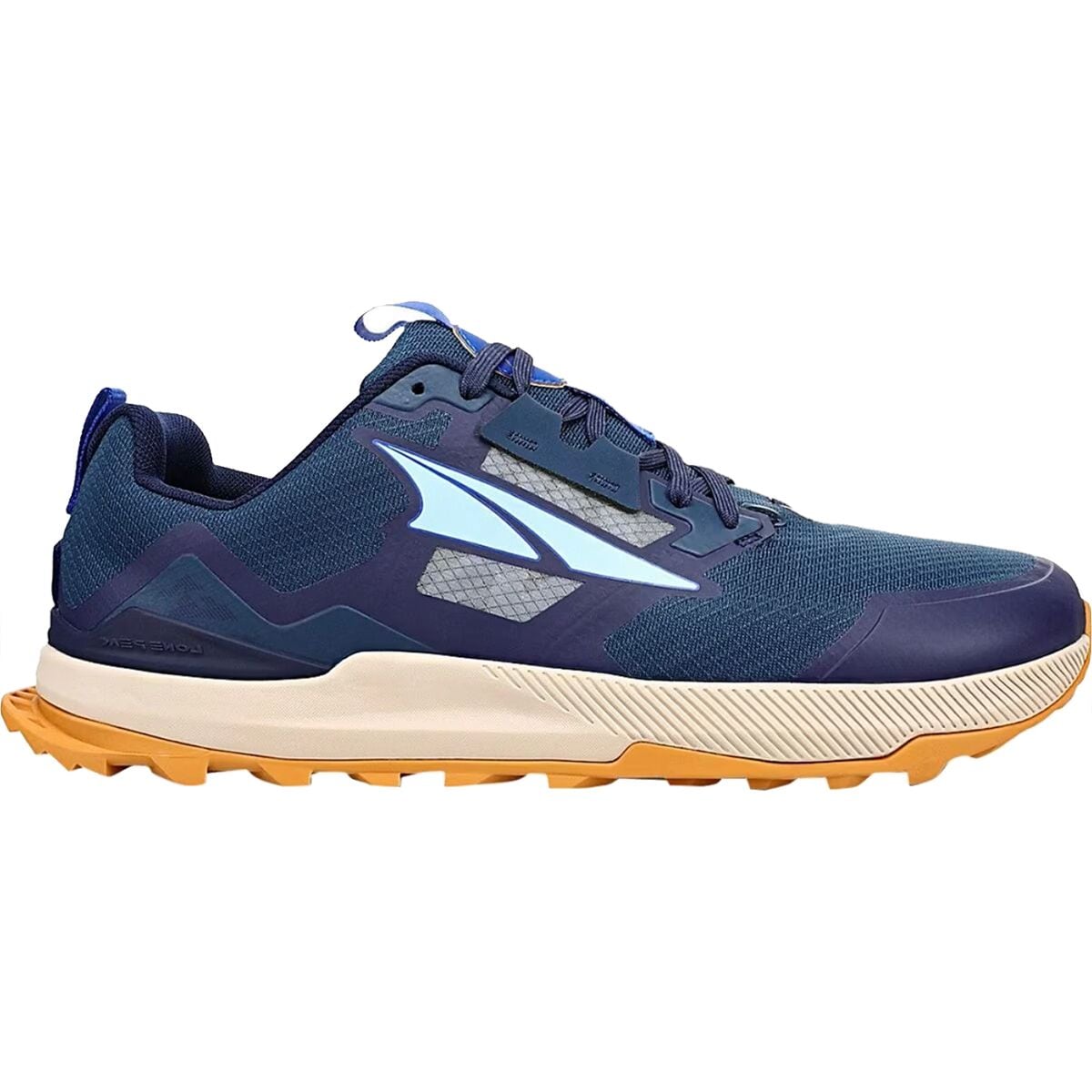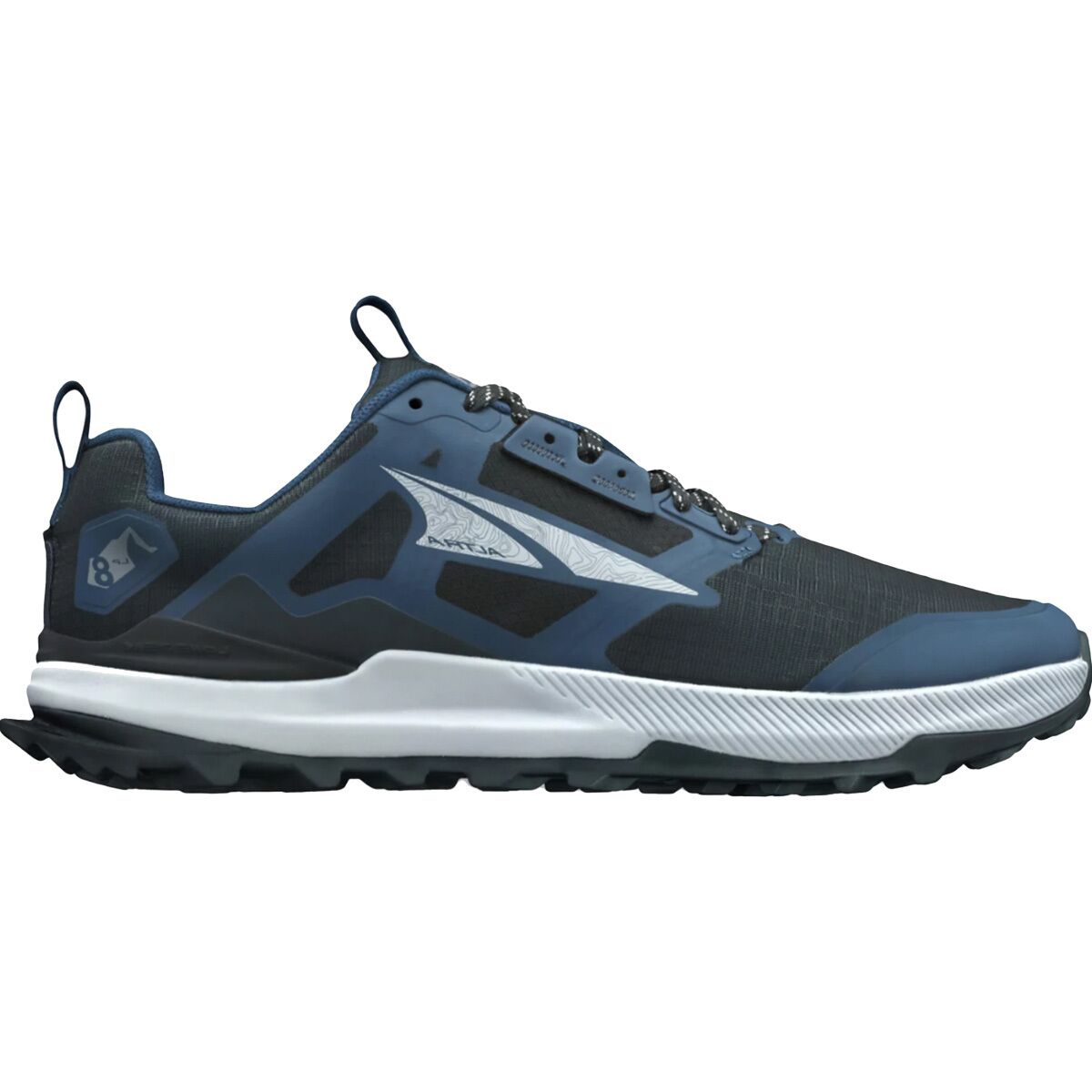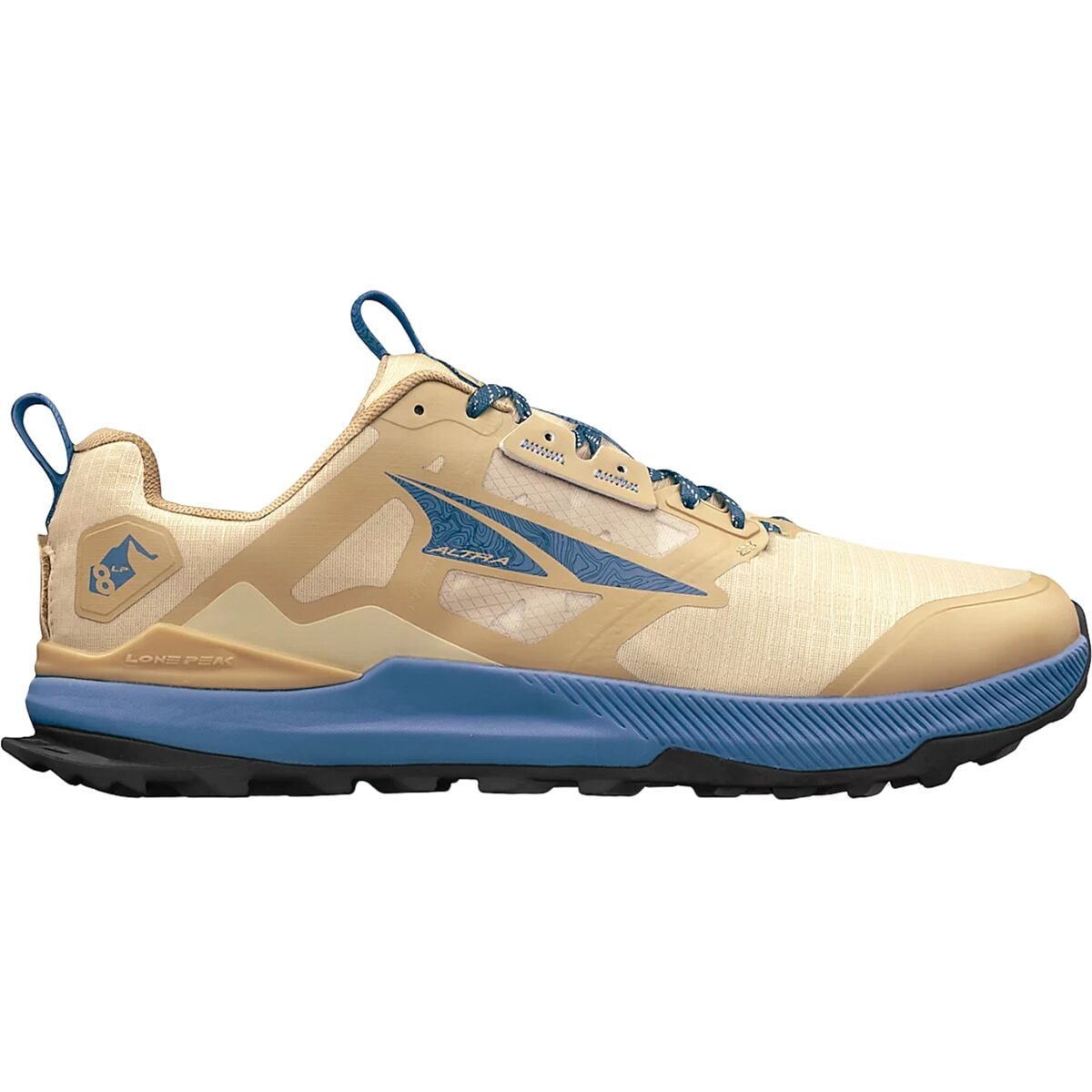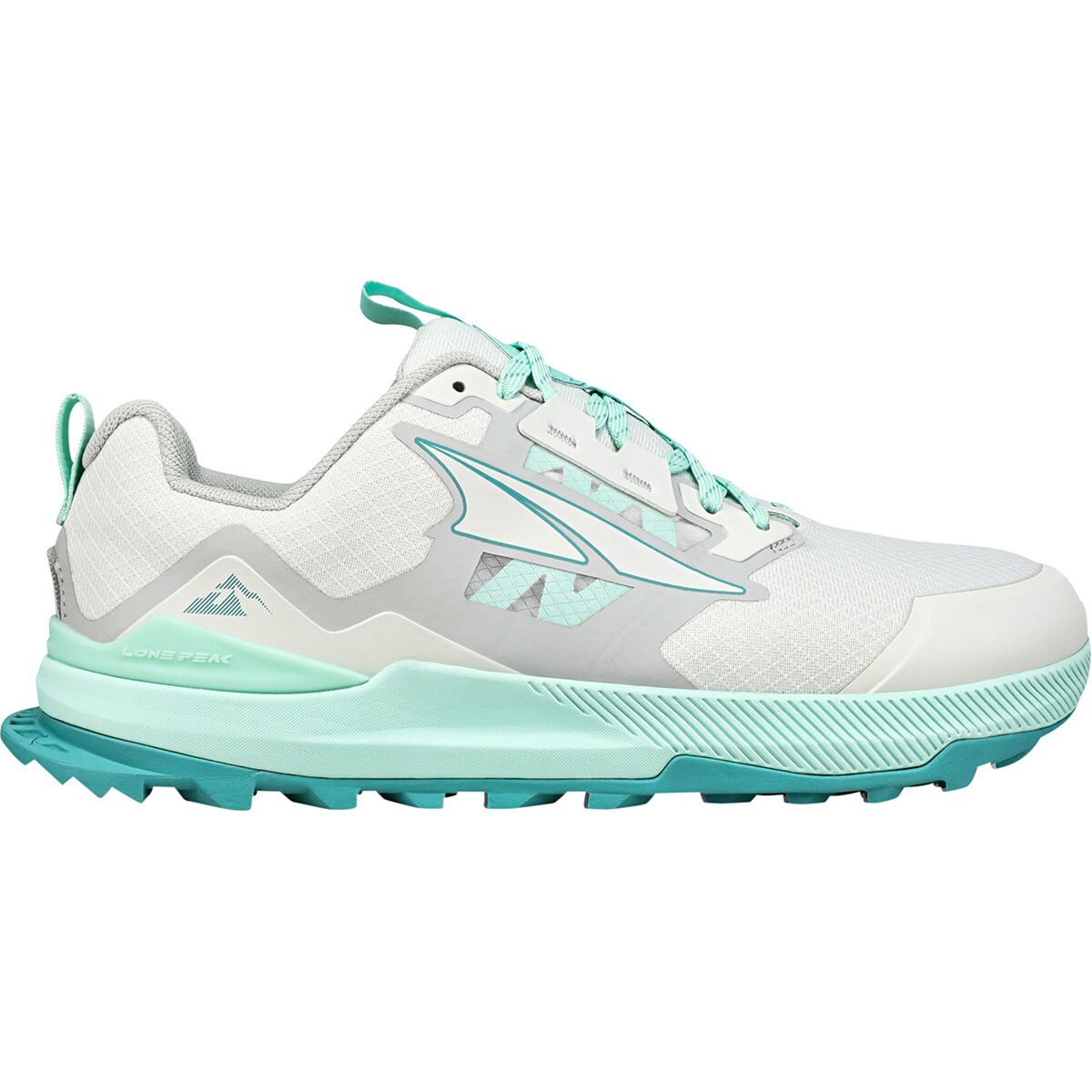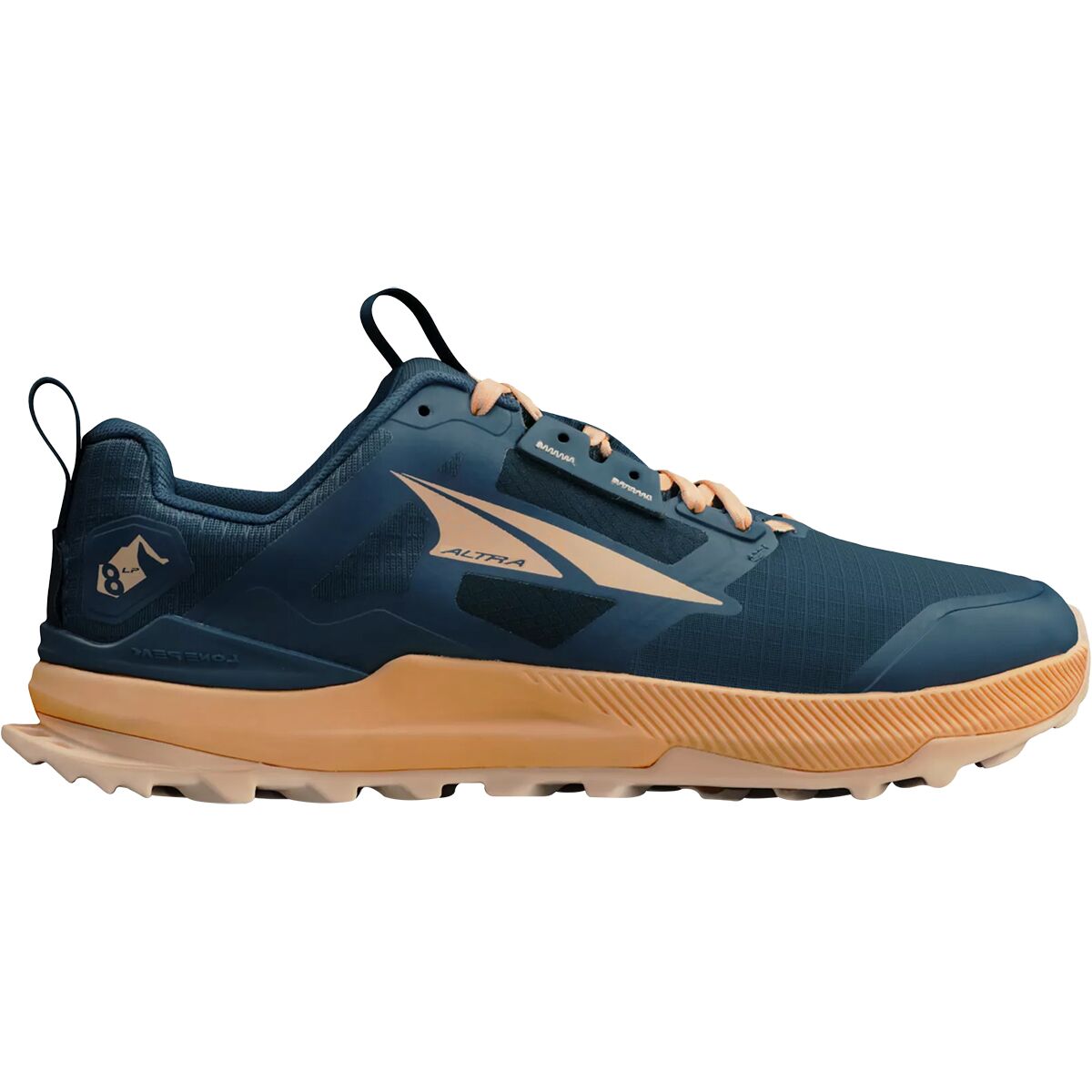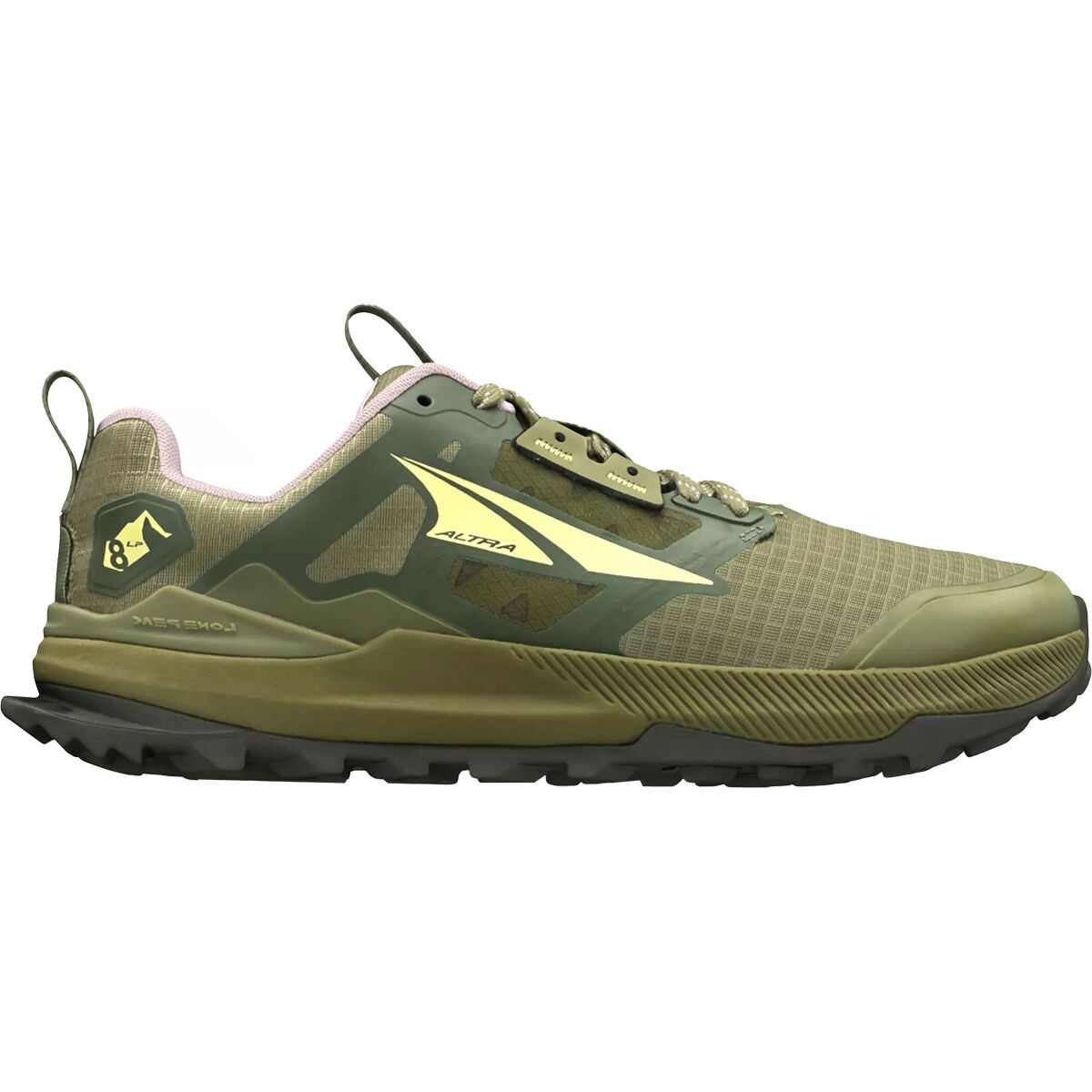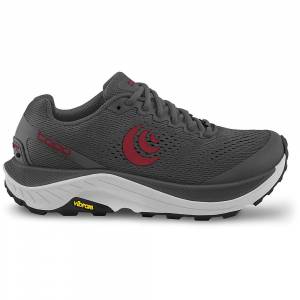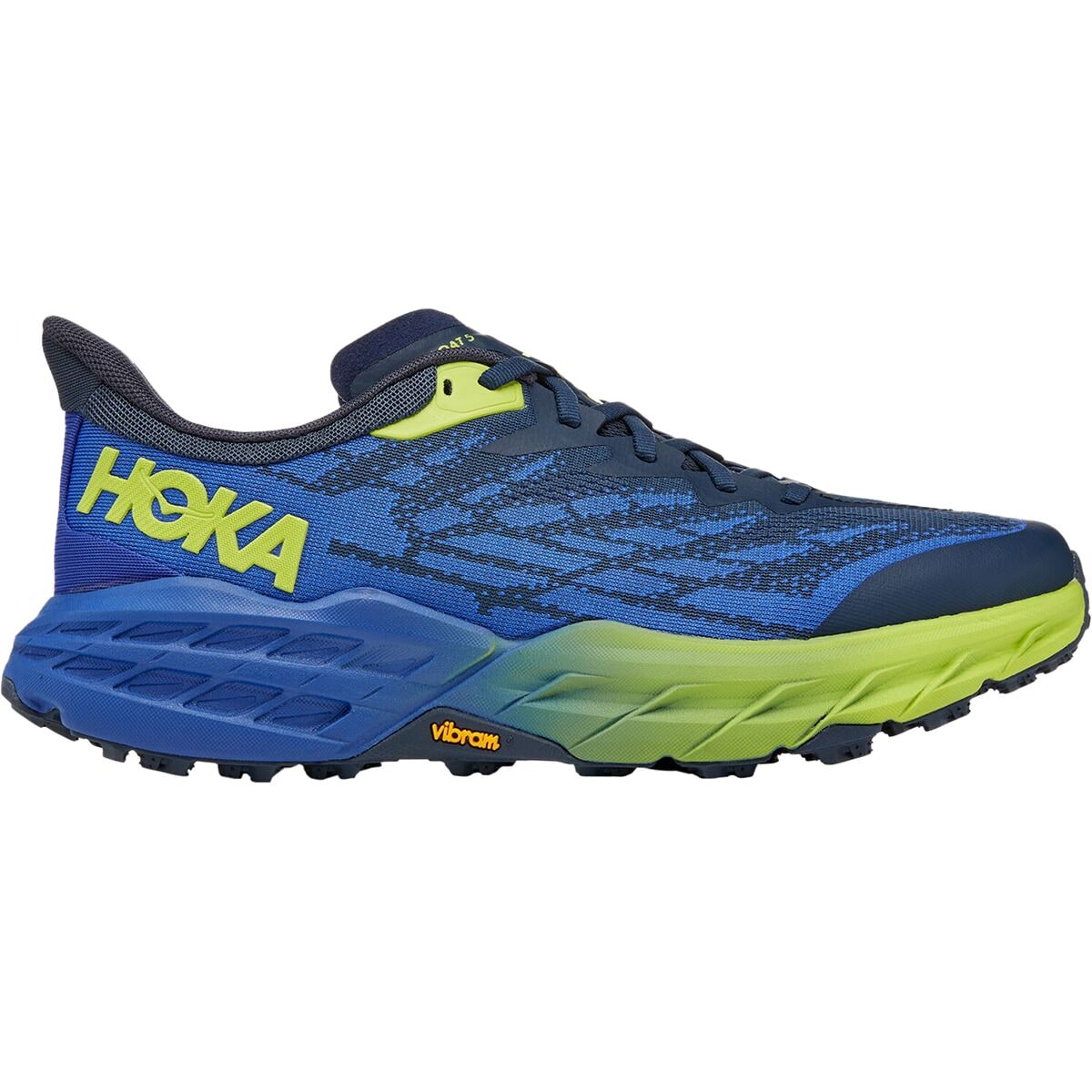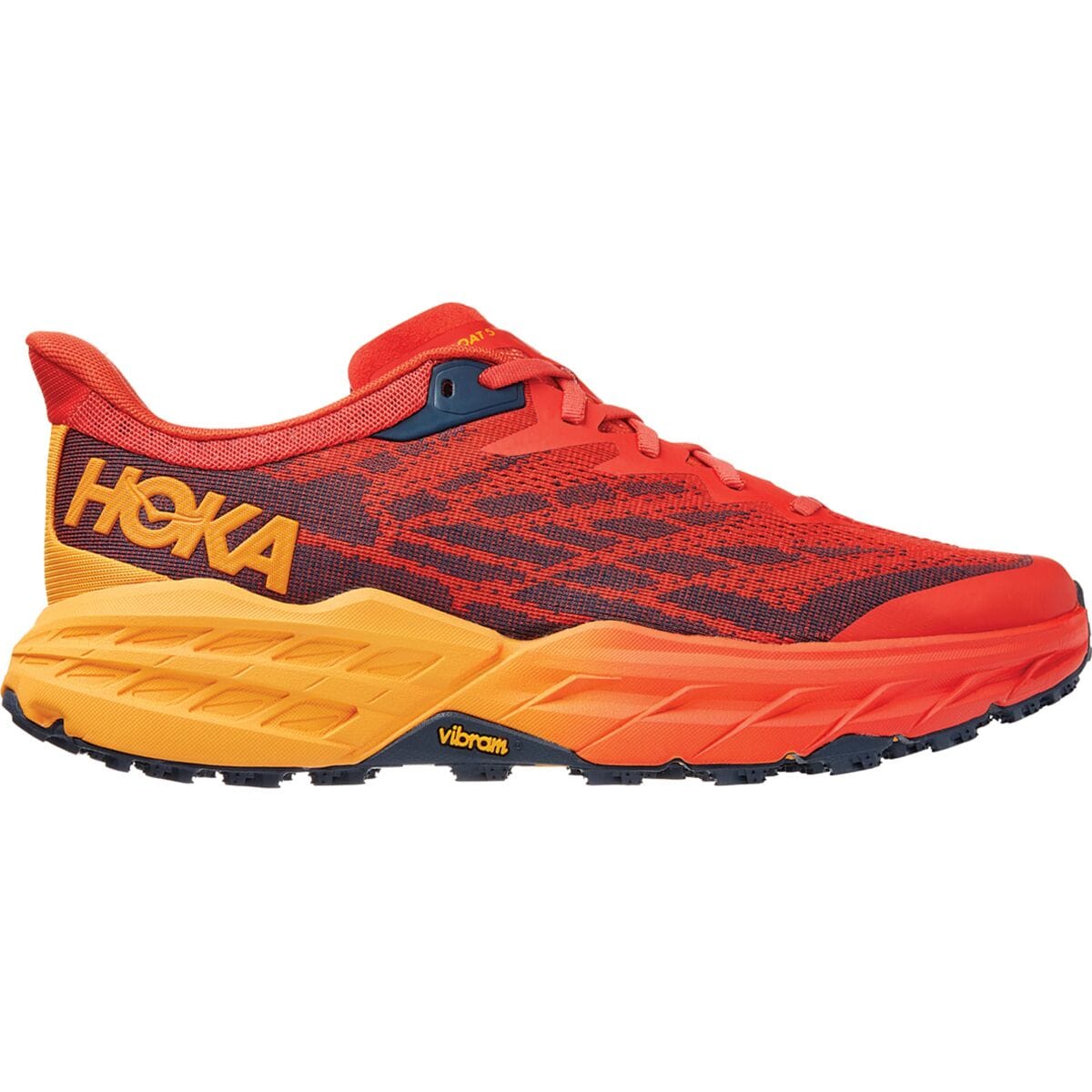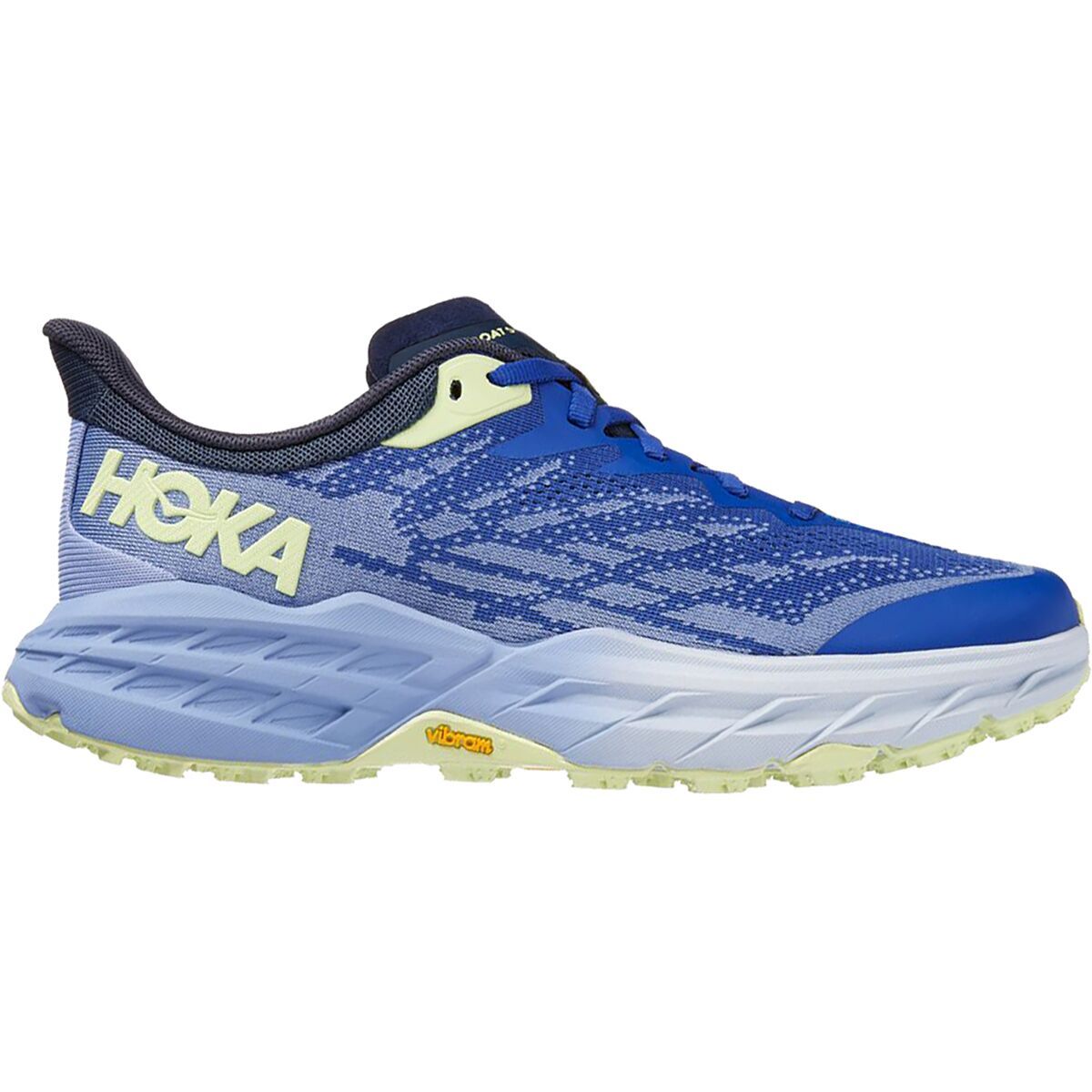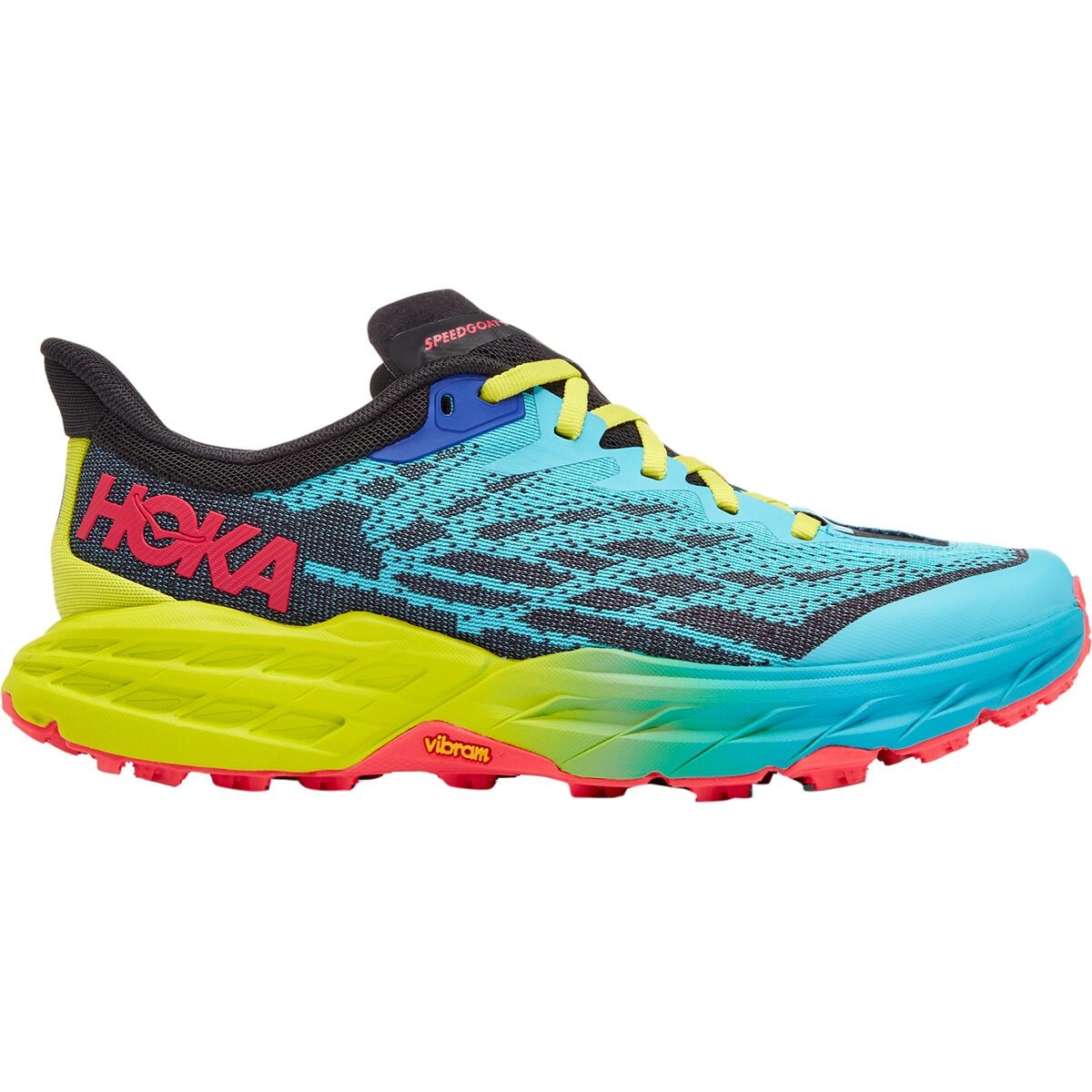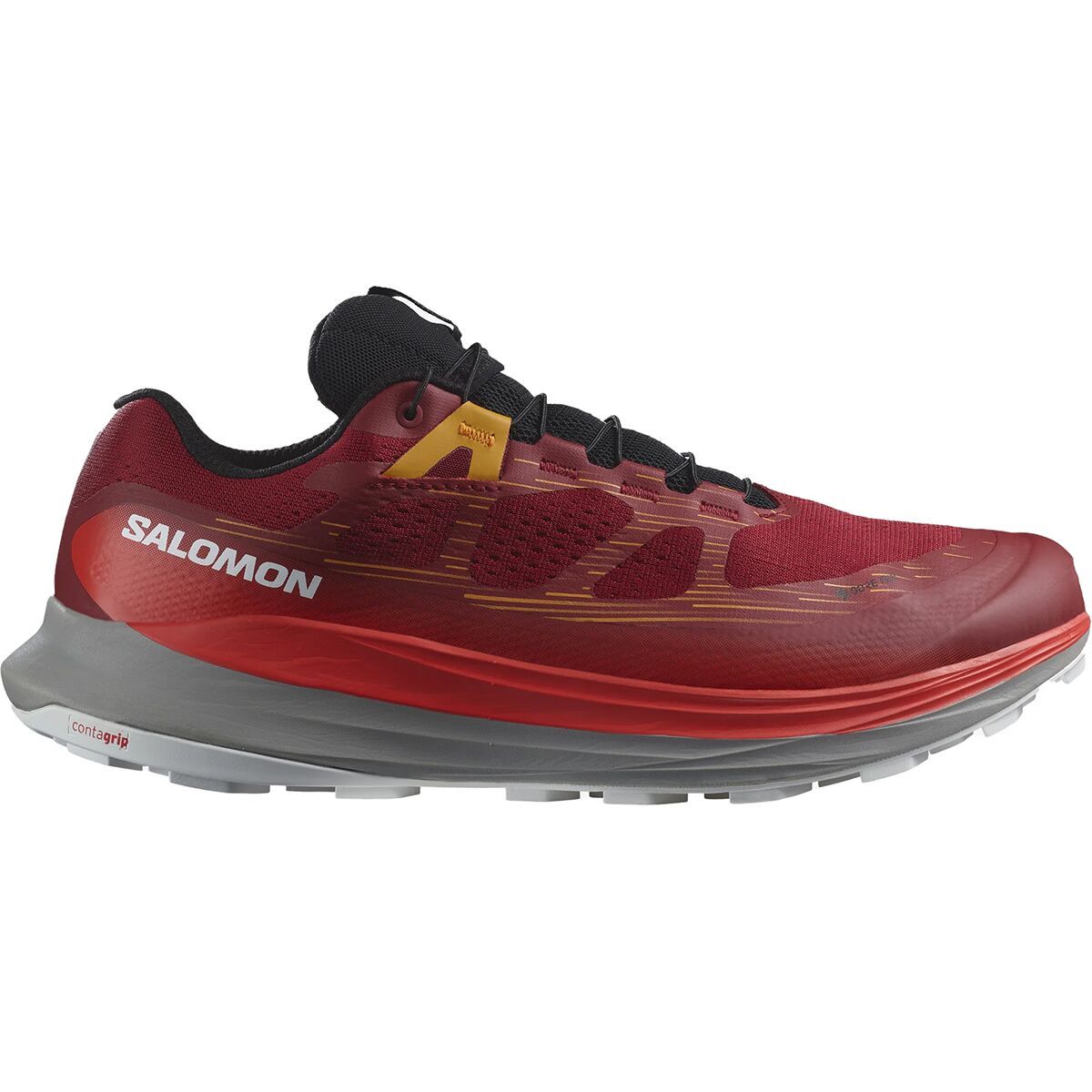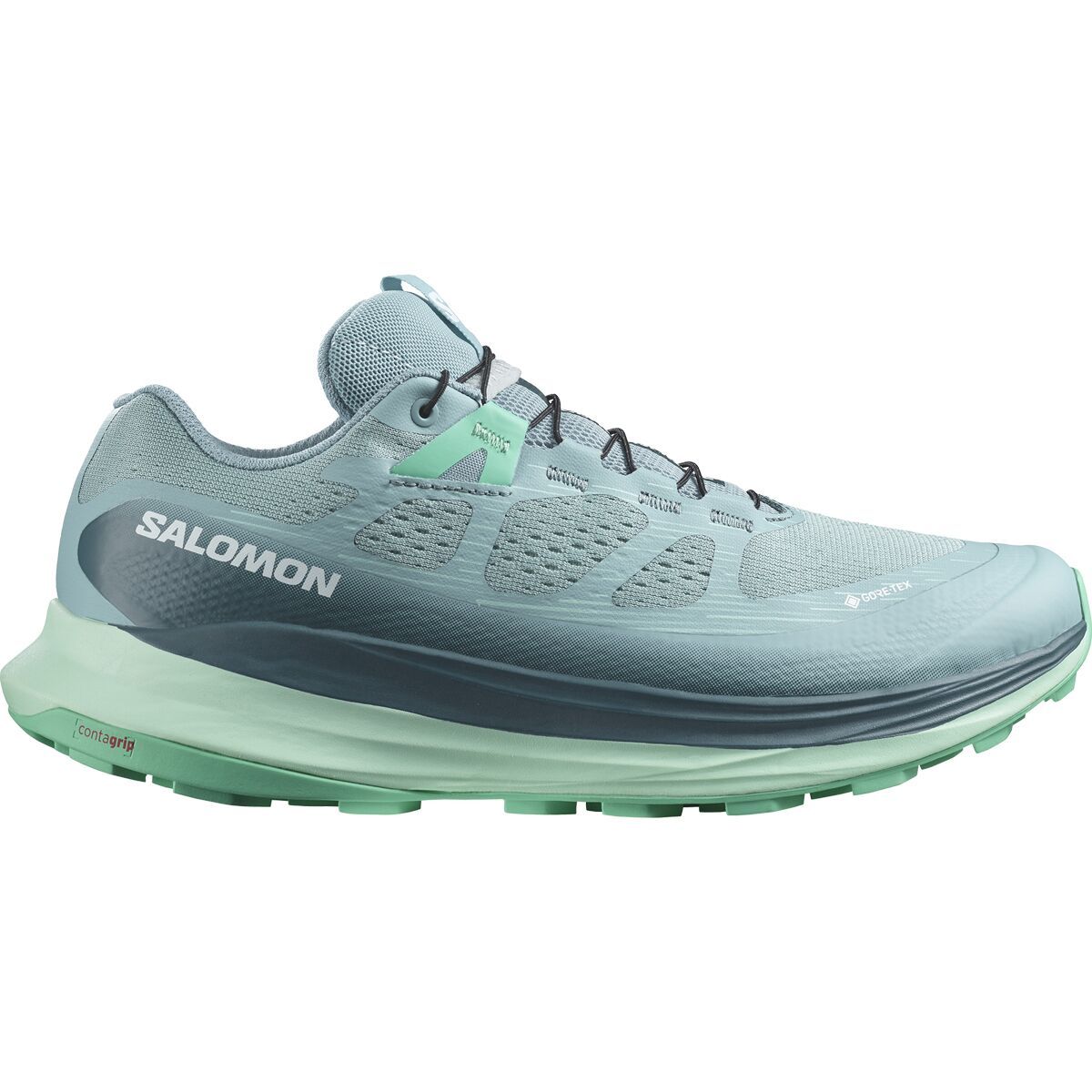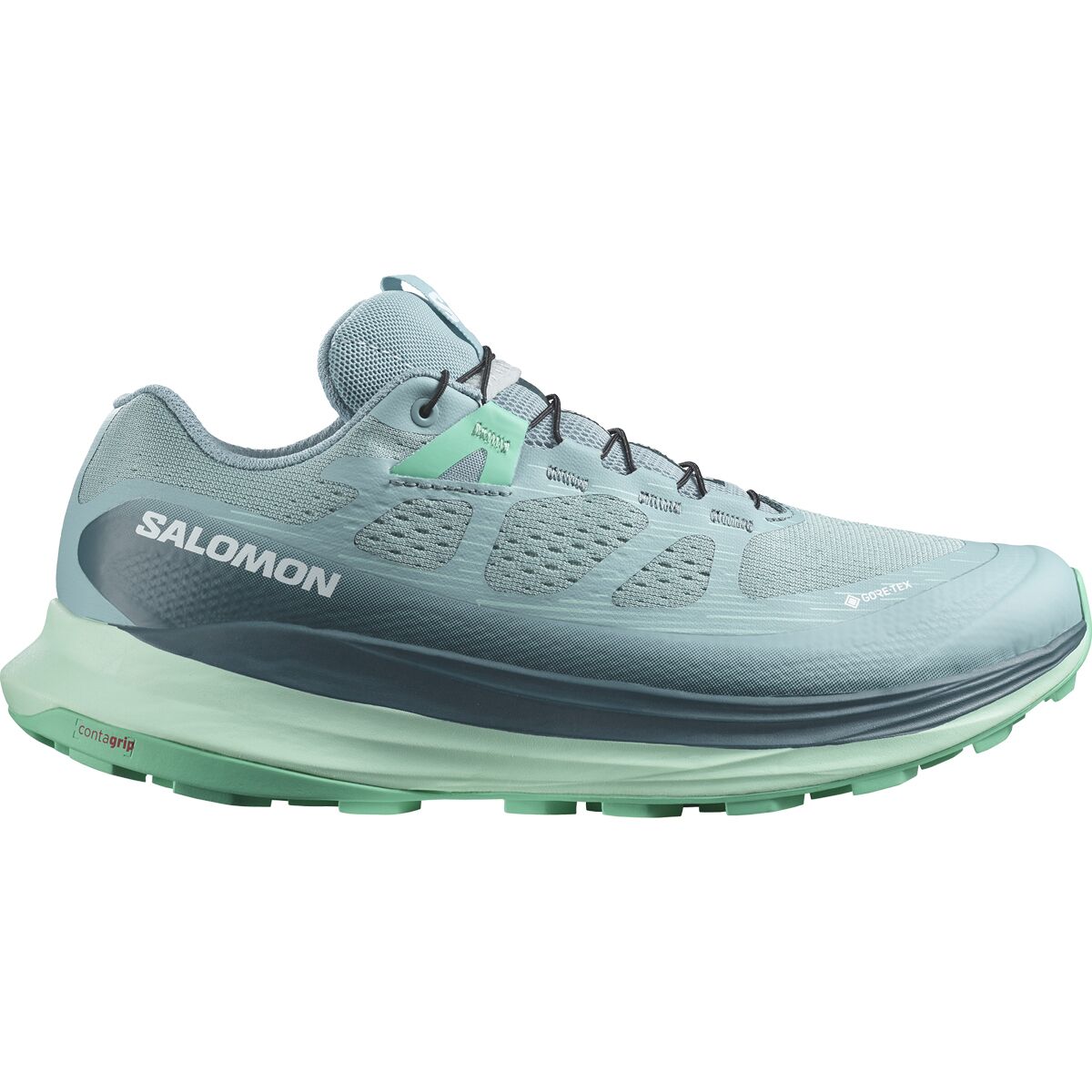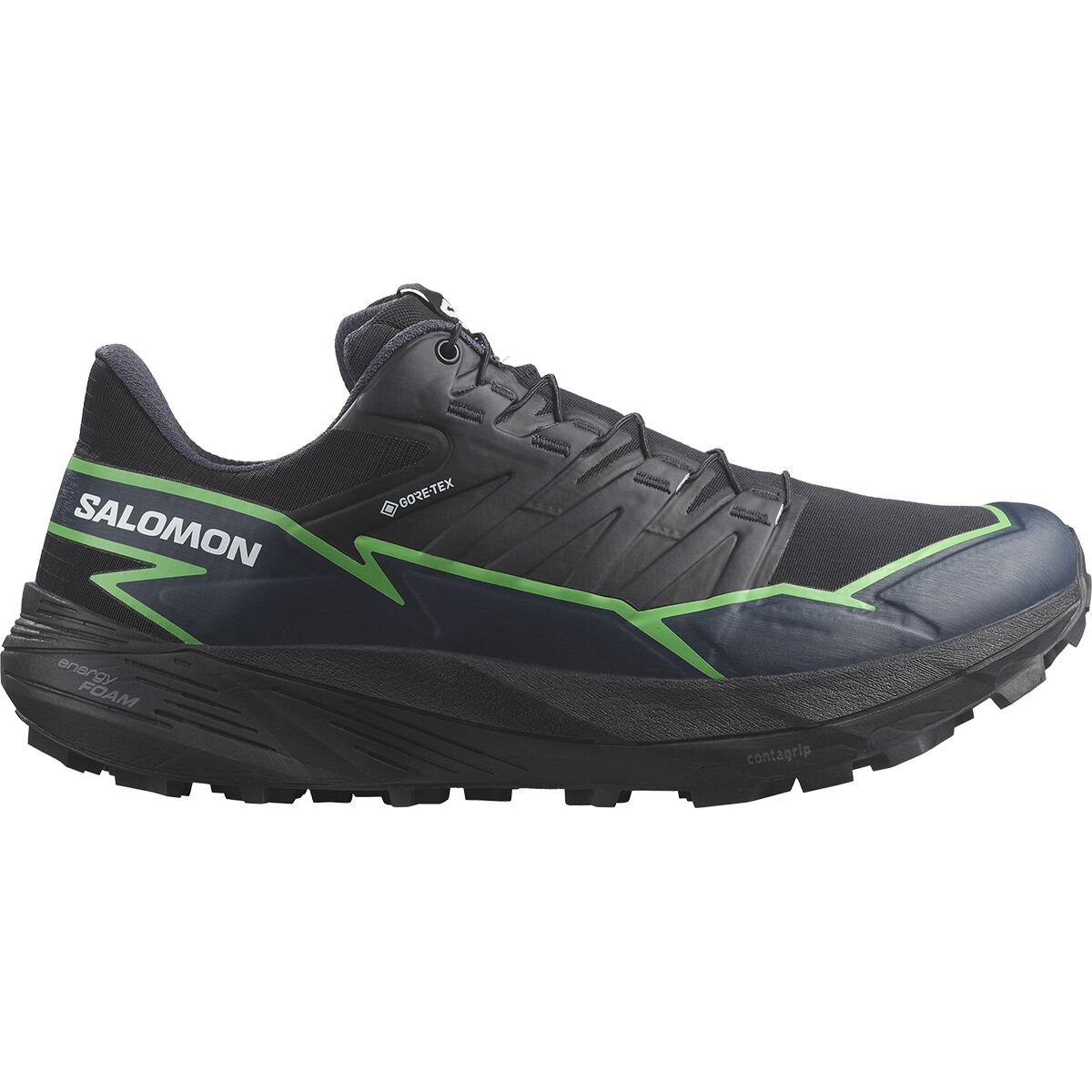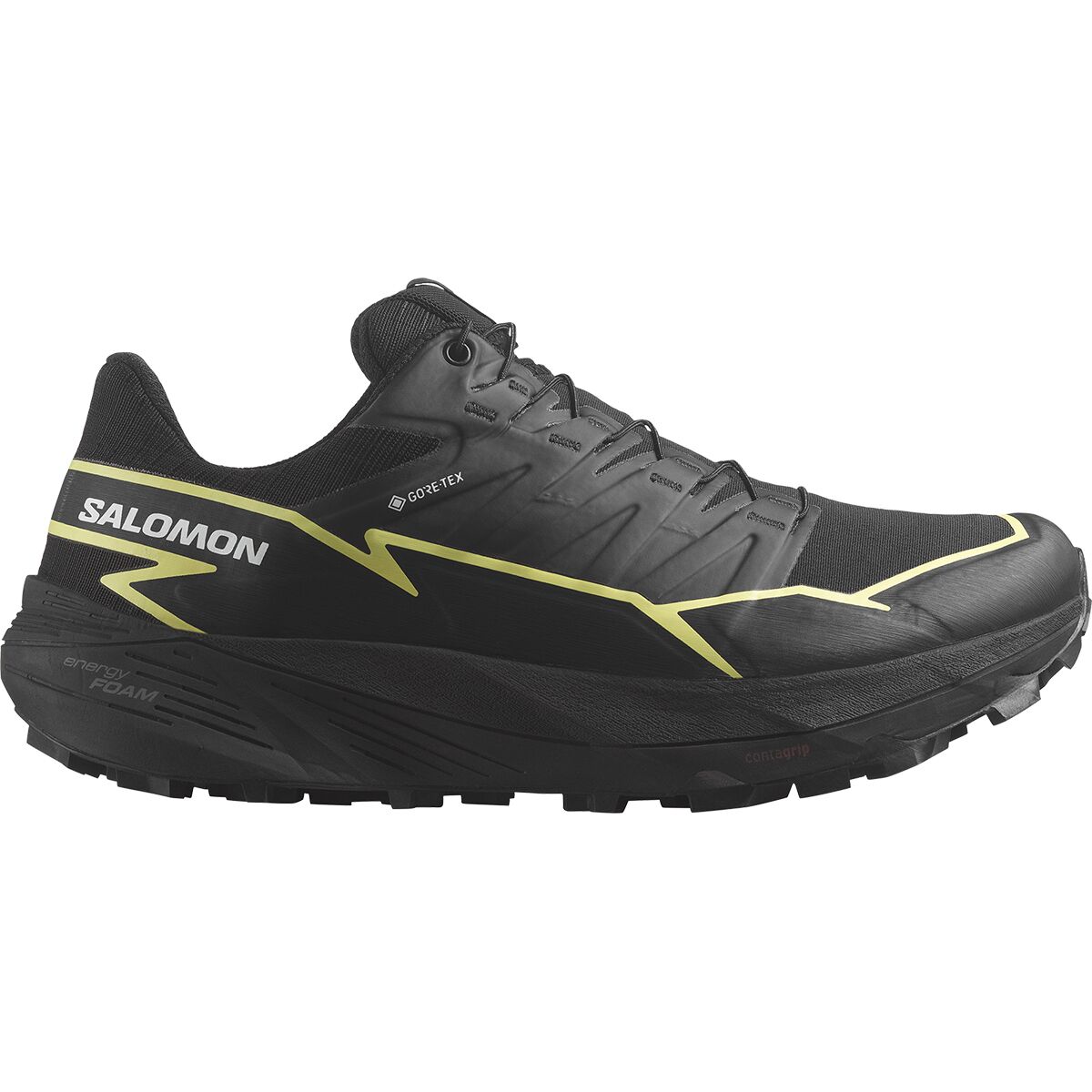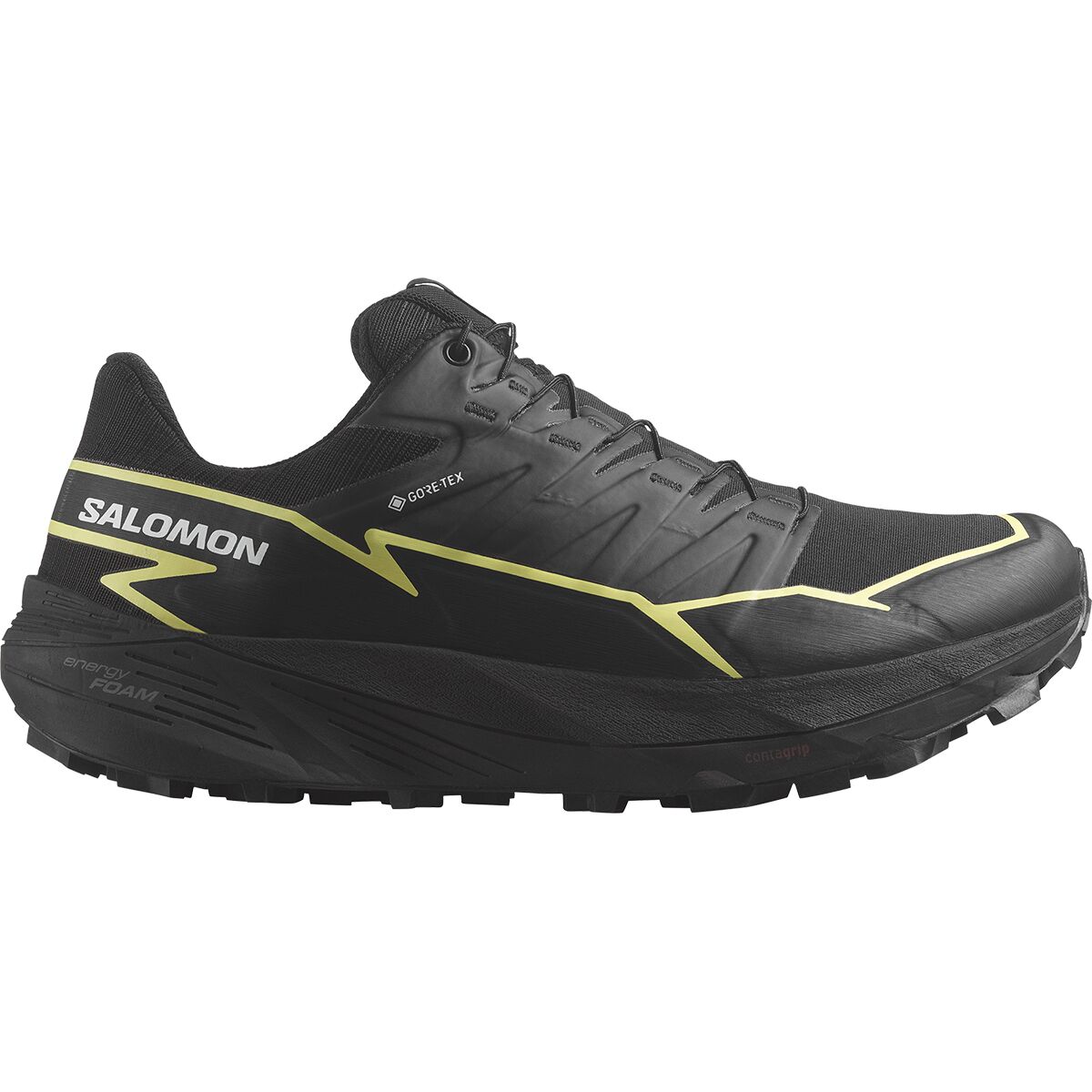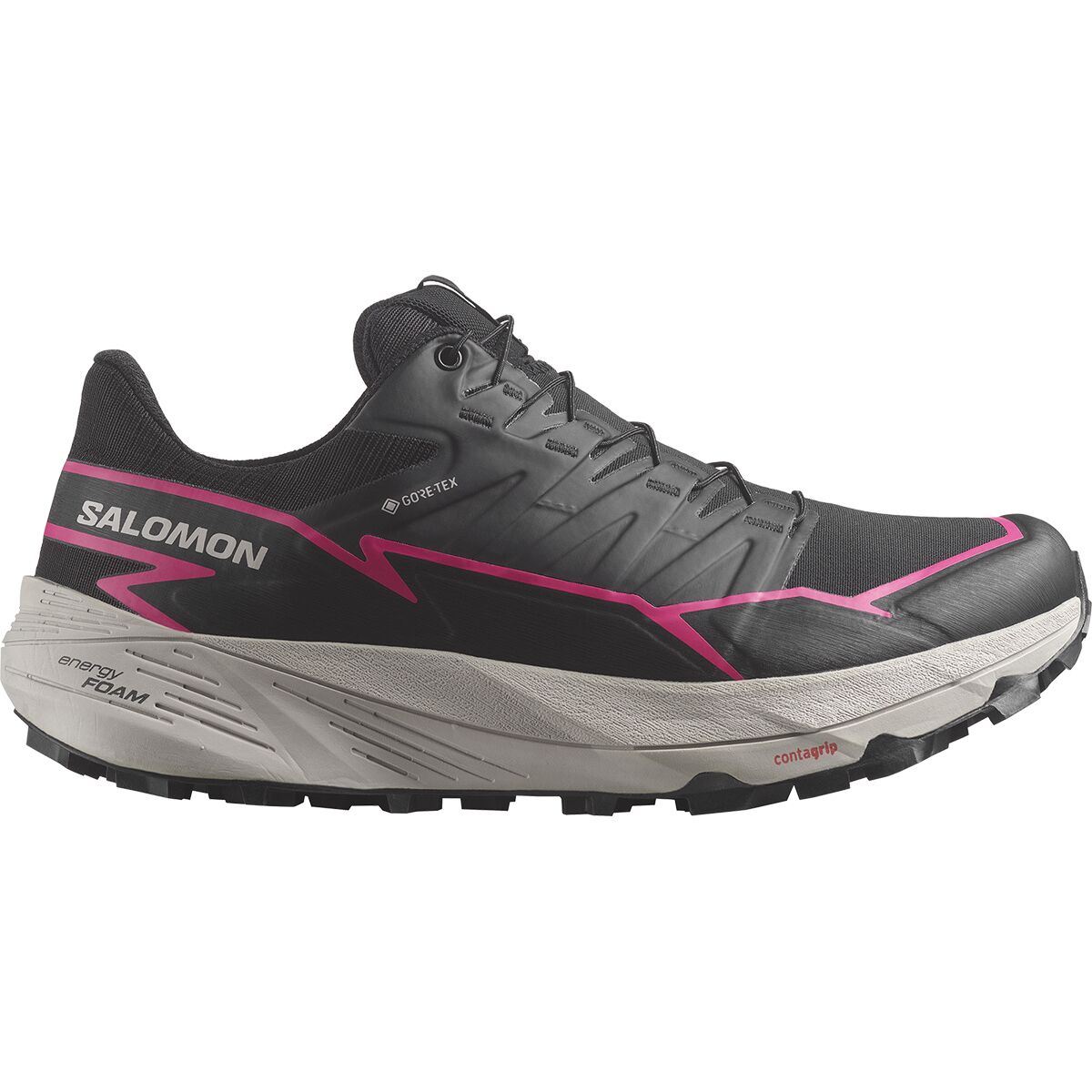Many hikers now choose trail running shoes as a lightweight alternative to traditional hiking boots and hiking shoes. However, trail running shoes are made for running—not hiking—which means hikers need to choose them carefully. The best trail running shoes for hiking are lighter than true hiking shoes but still sturdy enough to hold up to the rigors of hiking or ultralight backpacking. In 2024, the ten best trail running shoes for hiking are the
To narrow down your choices, you should consider fit—do your feet run narrow, standard or wide? You should also consider what you most want out of your shoes to balance the trade offs between different kinds of trail running shoes:
- Do you want a trail running shoe that's almost as supportive as a hiking shoe (or something lighter)?
- Do you want a more natural fit with a zero/low drop and wide toe box (or one with more cushioning/support)?
- Do you prefer a trail running shoe with more "float" or more "feel"?
- Do you need better traction on rock or more aggressive lugs for mud and mixed terrain?
best trail running shoes for hiking: more support
Trail running shoes may be sturdier than road running shoes, but they're not as supportive or as durable as true hiking shoes. That's why many hikers stick to stiffer, heavier trail runners for better support, foot protection, and durability. If you're looking for a trail running shoe that's almost as supportive as a hiking shoe, start with traditional trail runners, such as the Salomon XA Pro, Brooks Cascadia, and La Sportiva Ultra Raptor, or the new LOWA Fortux.
Salomon XA Pro
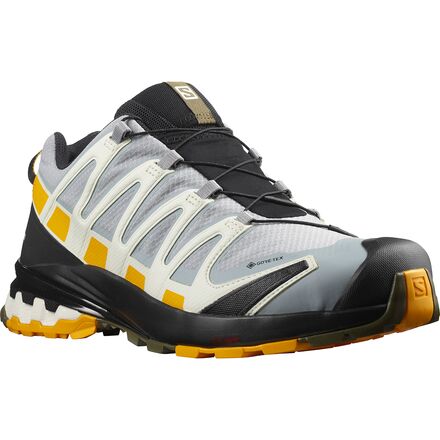
Main Benefits:
Salomon may classify the XA Pro as a running shoe, but men and women have been buying it as a hiking shoe for many years. This perennial best-seller is moderately stiff with a protective chassis adding some foot support and lateral stability to handle more weight and abuse than lightweight trail running shoes. At the same time, it's still lighter than the best hiking shoes. Available in a non-waterproof or GORE-TEX style, this shoe features moderate cushioning and moderate traction that's best suited for well-maintained trails and multi-surface use. The Salomon XA Pro may be a good choice for men and women who want to go lighter without losing all the stability and support of a traditional hiking shoe.
Best Fit
standard feet (slightly narrow), wides available
Best Match
easy to moderate day hikes, urban trails
Brooks Cascadia 17
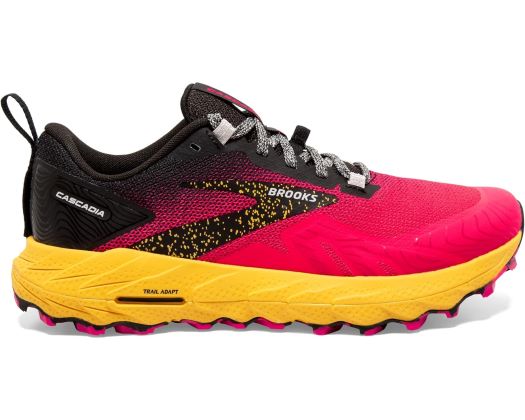
Main Benefits:
The Brooks Cascadia is another long-time best seller that's stiffer, heavier, and more supportive than most trail running shoes. That makes it a popular pick among day hikers and long-distance thru-hikers who don't want to lose too much support as they go lighter than a true hiking shoe. Now in its 17th version, the Cascadia has a sturdy but well cushioned ride with 8mm drop and aggressive, chevron-shaped lugs that can dig into mud and steep terrain for clutch footing. It also has a roomier fit than other shoes in this class, making it one of the best trail running shoes for hikers with wider feet.
Best Fit
standard to wide feet
Best Match
all-purpose hiking, thru-hiking
La Sportiva Ultra Raptor II
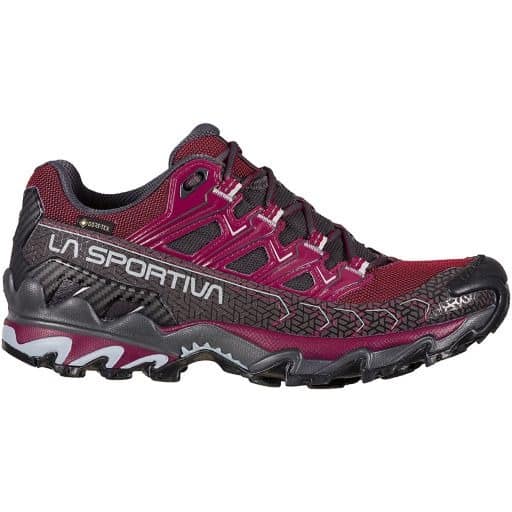
Main Benefits:
The Ultra Raptor II is La Sportiva's sturdiest trail running shoe, which makes it their best trail running shoe for hiking. In fact, the brand is re-classifying the Raptor as a "hiking shoe" in 2024 because of its long-time appeal for hikers who mostly hike mountains. The Ultra Raptor has a snug fit, stiff ride, plenty of foot armor (for a trail runner), and grippy outsoles that excel on rocks, thanks to Sportiva's climb-oriented Frixion rubber. Available in standard (runs small & narrow) and wide sizes, the Ultra Raptor II makes sense for hikers who value protection over weight savings in their trail shoes. It's one of the best trail running shoes for hiking rocky trails and for hikers with narrow feet.
Best Fit
narrow feet, snug fit,
wide sizes available
Best Match
mountainous terrain,
rock scrambling
LOWA Fortux (new!)

Main Benefits:
The sturdiest of the three trail running shoes that LOWA debuted late in 2023, the Fortux impresses with its mix of weight savings and support. Made for long distance trail runs, the LOWA Fortux is at least as supportive as the shoes above while weighing several ounces less per pair. It's stiffer than my other trail runners—with plenty of backbone for tougher terrain—but also packs in plenty of cushioning, too. I'm not sure how LOWA pulled it off so much support and cushion in shoe that weigh 12 ounces less than the average pair of hiking shoes?! However, the LOWA Fortux is already one of the best trail running shoes for hiking moderate to difficult terrain.
Best Fit
standard to slightly wide feet
Best Match
moderate to difficult trails
best trail running shoes: zero/low drop
On the other end of the spectrum, some hikers prefer "zero drop" or "low drop" trail running shoes to rely upon their body—not their shoes—for cushioning and support. "Zero drop" shoes remove the extra heel cushioning and mid-foot structure that running shoes traditionally have added for comfort and support. A flat shoe (with no drop from heel to toe) encourages runners (or hikers) to land more naturally on the mid-foot by making it uncomfortable to land any other way. ("Low drop" shoes retain a little of this cushioning and support.) This category of trail runners also tends to have wider toe boxes to allow toes to splay naturally for a solid base. If you're looking to tap into and develop your body's natural cushioning and support mechanisms, the Altra Lone Peak (0mm drop), Topo Ultraventure 3 (5mm drop), and new Topo Traverse (5mm drop) are the best trail running shoes for hikers who believe in the zero drop or low drop philosophy.
Altra Lone Peak
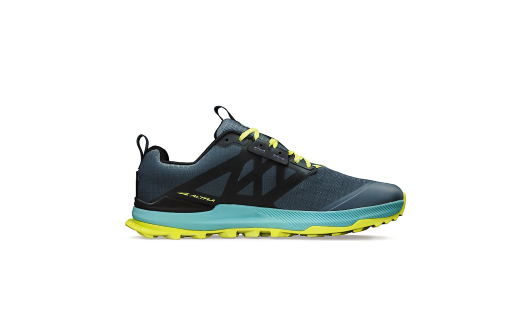
Main Benefits:
The Altra Lone Peak has a cult-like following among long-distance thru-hikers and those who subscribe to the brand's unique fit and philosophy. Many hikers swear by Altra's "zero drop" platforms (with balanced cushioning beneath the heel and toes) and wide, Footshaped toe boxes. The Lone Peak features moderate cushioning and synthetic mesh uppers that drain and dry quickly. This niche shoe makes sense for hikers who want to lean on their body's natural cushioning and support mechanisms—and don't make sense for those who prefer more supportive, protective trail shoes or more conventional fits. Altra's philosophy isn't for everybody, but many hikers are hooked on Altras—and religiously buy Lone Peak after Lone Peak. The Lone Peak 8 just dropped for 2024.
Best Fit
standard to wide feet,
wide sizes available
Best Match
thru-hikers,
zero drop fans
Topo Ultraventure 3
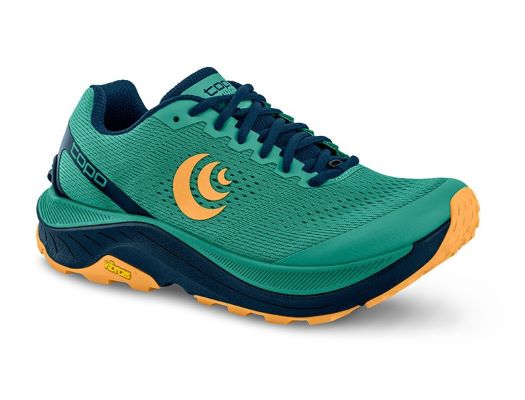
Main Benefits:
Made for ultra-marathoners, the Topo Athletic Ultraventure 3 features plush cushioning and the "Topo Fit" that podiatrists love. Topos encourage a more natural stride with low heel-to-toe drop, a more secure fit in the midsole than Altra, and wide toe boxes that put our toes in a strong and relaxed position. Topo's best-selling shoe, the Ultraventure features a tall stack of cushy foam to take some pressure of your hiking feet with well-ventilated mesh uppers and grippy Vibram Megagrip outsoles to tackle tougher terrain. The Ultraventure is one of the best trail running shoes for long distance hikers and day hikers who prefer lightweight trail running shoes with extra room in the toes, heaps of cushioning, and clutch traction.
Best Fit
standard to wide feet,
natural fit/wide toe box fans
Best Match
fast-and-light hikers, thru-hikers, max cushion fans
Topo Athletic Traverse
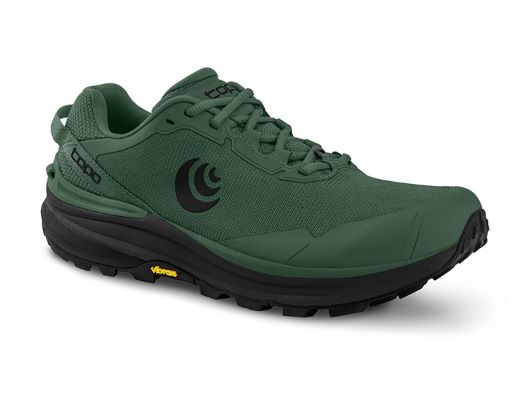
Main Benefits:
New for 2024, the Topo Athletic Traverse is trail running shoe that's specifically designed for long-distance thru-hiking. The Traverse is a little more supportive than the Ultraventure above with firmer cushioning, light stability, and the signature "Topo Fit"—low (5mm) drop, a secure fit in the mid-foot, and roomy toe box—for a more natural stride. The Topo Traverse has kept its weight in check while adding some support in the heel and midfoot, providing a moderately high stack height for shock absorption, and opting for Vibram Megra Grip outsoles for premium trail traction. It's also optimized to drain water and dry quickly, helping thru-hikers who don't take many zero days to let their shoes dry out. This is the rare trail running shoe that's actually designed for thru-hiking—an intriguing new option for 2024.
Best Fit
standard to wide feet,
natural fit fans
Best Match
thru-hikers, fast-and-light hikers, wide toe box fans
best trail running shoes for hiking: max cushion
Trail running shoes usually have less cushioning than hiking shoes to reduce overall weight. However, a few trail running shoes are both lightweight and heavily cushioned for those who want more "float" than "feel," such as the Hoka Speedgoat, Salomon Ultra Glide, and Salomon Thundercross. They're the best max cushion trail running shoes for hikers.
Hoka Speedgoat
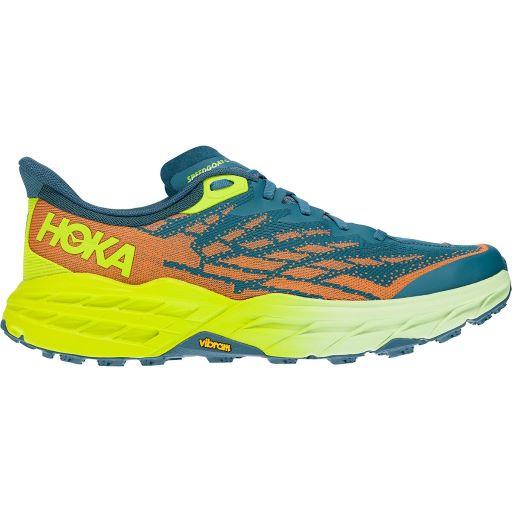
Main Benefits:
The Hoka Speedgoat is the best trail running shoe for hikers who prefer minimum weight and maximum cushion. The Speedgoat is the most popular Hoka for hikers— and the top-selling trail shoe in the U.S.. It's lightweight—in spite of its supersized midsole. And it's also surprisingly supportive for such a cushy shoe. That marshmallowy mound of EVA foam is mostly there for comfort and shock absorption. But it's thick enough that it prevents feet from over-flexing on uneven terrain and provides more lateral support than you might expect from such a soft and light shoe. Not everybody loves Hokas' tall stack height and pronounced rocker. If you crave cushioning, however, you'll probably pick the Speedgoat as the best trail running shoe for hiking.
Best Fit
standard to wide feet,
wide sizes available
Best Match
day hikers, thru-hikers,
max-cushion fans
Salomon Ultra Glide 2

Main Benefits:
Hoka doesn't have the market cornered on max-cushion trail runners. The Salomon Ultra Glide 2 is another super-cushy, welterweight trail running shoe that's hikeable. This one's made for fast hikers with light packs or total cushion sluts who want more float than feel out of their trail running shoes. Ultra Glides are not as stiff or as narrow as most Salomons, which may appeal to men and women who prefer a softer ride and roomier fit. This is one of the best trail running shoes for hiking well-maintained trails or long-distance trails.
best fit
standard to wide feet,
available in wides
best match
fast-and-light hikers, thru-hikers, max cushion fans
Salomon Thundercross
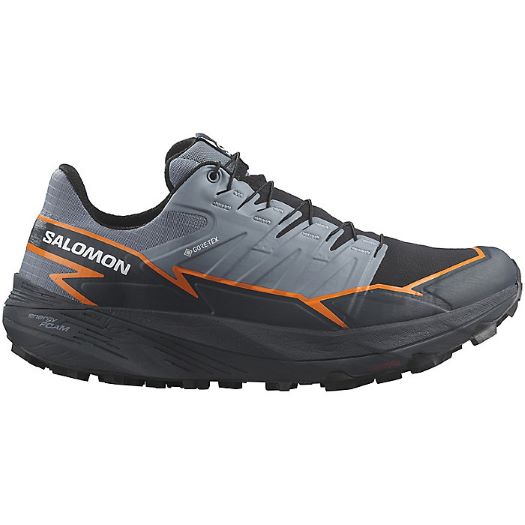
Main Benefits:
The Salomon Thundercross is a new, do-it-all trail running shoe that honestly could fit anywhere on this list. It's supportive, lightweight, low drop, and max cushion—all at the same time. Like its cousin the Speedcross, the Thundercross features aggressive lugs that dig into mud and loose surfaces, but it's stacked with much more cushioning and a roomier fit than most of Salomon's trail running shoes. This versatile trail runner for hikers is available in either a non-waterproof or GORE-TEX version for multi-season wear and comes in both standard and wide sizes. There's not much that this shoe can't do.
choosing the best trail running shoes for hiking
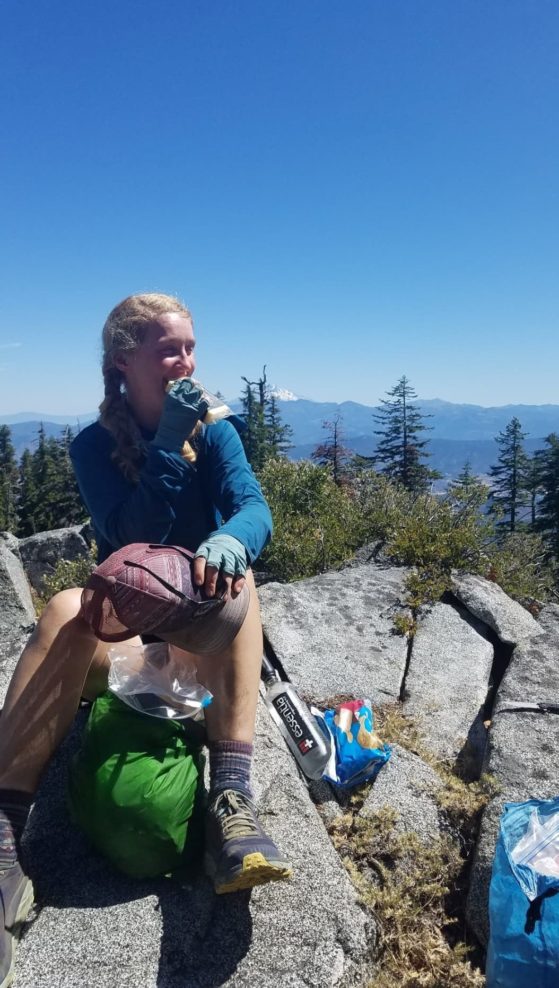
trail running shoes are a popular pick on the Pacific Crest Trail
You'll have to make your own choice when it comes to choosing hiking boots vs hiking shoes vs trail running shoes. As the saying goes, "hike your own hike." Wear what you want.
However, trail running shoes make the most sense for hikers who value weight savings more than price or support. Working in the outdoor industry, it's been my experience that these groups of hikers are more likely to be happy with trail runners as hiking shoes:
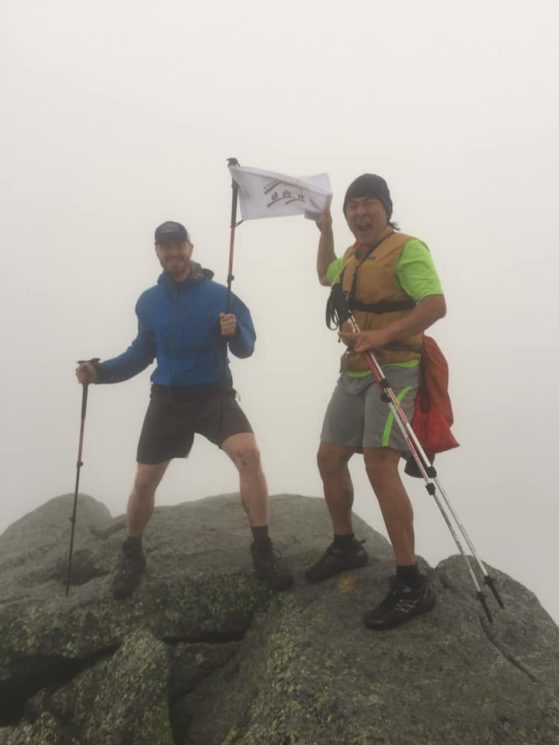
Trail running shoes may be supportive enough for experienced, athletic hikers
weight savings = energy savings
Why are trail running shoes the big trend in hiking footwear? The main reason is weight savings. Less weight on your feet saves energy.
However, it's a myth that weight on your feet is five times worse than weight on your back. Empirical studies suggest the average hiker doesn't hike fast enough for weight to matter much on their feet. And, honestly, lighter shoes won't make a significant difference on shorter hikes.
Weight matters. But it matters most for fast hikers and long-distance hikers. Saving a few ounces may not matter if you only hike an hour or two. However, it may save significant energy on the Appalachian Trail or Pacific Crest Trail, where thru-hikers rack up 15- to 20-mile days for months.
Trail running shoes may be more comfortable for some hikers, too. Some hikers prefer the feel of trail-runners because they're lighter and more flexible than hiking boots or hiking shoes. Runners who hike often prefer the familiar feel of trail running shoes, too. Made with light-weight mesh, trail running shoes also provide better ventilation and dry out quickly. That’s a bonus on multiday hikes, where you don't have off days for your shoes to dry.
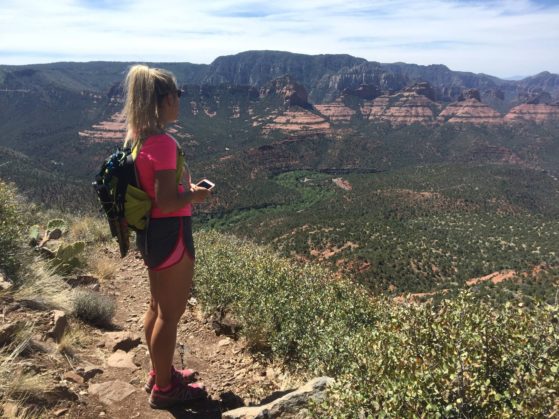
Fast hikers save more energy in lightweight trail running shoes
weight savings vs support and durability
However, weight savings also has its costs.
Trail running shoes are more rugged than road running shoes. But they still provide less support and foot protection than hiking boots or hiking shoes. That may not matter much on easy terrain. But hiking in trail running shoes may increase your risk for lower body injuries, especially if you're
That's why the best trail running shoes for hiking strike a balance between weight savings and support. Generally speaking, the heaviest, most rugged trail running shoes make the best hiking shoes.

pro tip:
The most rugged trail running shoes generally make the best hiking shoes.
Even then, trail running shoes have limited durability. Most trail runners are designed to be replaced after 200-300 miles. (They may last longer than that on easy trails—and less than that in rocky terrain—depending on your weight, gait, and other variables.) That may be 2-3 times less than the lifespan of the best hiking shoes and hiking boots.
On the surface, trail running shoes usually cost less than hiking shoes and hiking boots—up front. If you do the math, though, trail running shoes may be the most expensive option long-term because you'll need to buy more of them over time. There's not only an economic cost to hiking in lighter, less durable footwear. There's also an environmental cost.
how to fit trail running shoes for hiking
Once you've decided on trail runners, fit should be your first priority. After all, the best trail running shoes will suck If they don't fit your feet. Unfortunately, plenty of hikers and backpackers buy footwear that doesn't fit.
The best way to buy trail runners that fit is to get fitted at your local hiking shop, running shoe, or REI— not a sporting goods chain store. If that's not an option right now, here are some pro tips from my fitting experience:
Most hikers should choose trail runners with approximately 1/2" of room between your longest toe and the end of the boot—roughly the width of your finger (men) or thumb (women). This half-inch clearance (1) accommodates foot swelling (especially on longer hikes) and (2) prevents your toes from hitting the end of the boot on steep descents (which leads to injuries and lost toe nails).

Your hiking size probably will be be a half-size or full-size larger than your everyday shoe size. However, the key is following the advice above, not simply sizing up. For more, please check out Hiking Feet's sizing and fitting guide for hiking footwear.
Width is also a concern, especially with trail runners. Hikers with narrow feet should target brands that run narrow; La Sportivas, for example, run narrow, while Salomons fit snug in the heel with tapered toe boxes. Salomon (slightly narrow) and Hoka (slightly large) have more standard fits while Altra and Topo feature wide toe boxes that are intended for all people, but may feel uncomfortable if you're used to narrower fits.
waterproof vs non-waterproof trail running shoes
Most experienced hikers do not choose waterproof trail running shoes.
Here's why. It might seem obvious that a waterproof shoe would keep your feet drier in damp environments. At most, though, a trail-runner only provides a couple inches of water protection. That may stand up to a shallow puddle or dew on mowed grass. But that's about it.
At the same time, waterproof shoes have two key drawbacks for hikers:
That's why many experienced hikers— especially thru-hikers— tend to pair non-waterproof trail running shoes with (quick drying) merino wool socks. That combination may keep many hikers' feet cooler and drier than waterproof shoes, especially if you're hiking fast and/or hiking long distances (which build up more body heat).
That being said, many hikers also choose waterproof trail running shoes. That makes sense if you live in cool and damp environments, hike in winter conditions, or walk a lot on mowed, grassy trails where there's frequent dew, frost, and puddles. For the most reliable and breathable waterproofing, choose trail running shoes with GORE-TEX or eVent membranes.
Among my recommendations, the Hoka Speedgoat GTX, Salomon XA Pro GTX , and La Sportiva Ultra Raptor II GTX are waterproof-breathable GORE TEX ("GTX") options while the Altra Lone Peak All-Weather features highly breathable eVent waterproofing. (The Topo Ultraventure Pro is not offered in a waterproof style.) For more on waterproofing and breathability, please check out my post on waterproof vs non-waterproof hiking footwear.
buying the best trail running shoes for hiking
The trend towards trail running shoes may be a good one for many hikers, especially if you hike fast and light. The trail-runners I've recommended here have strong reputations with pros in the outdoor industry. At least one of them should be a good match for your feet and your style of hiking.
Are you ready to pull the trigger on a new pair of trail runners?! If this post helped you decide, please consider buying your next pair through the affiliate links above. Hiking Feet may receive a small commission (at no cost to you) from Backcountry or REI—the best outdoor specialty retailers in the U.S. These commissions fund this site (and compensate me for the hundreds of unpaid hours I spent creating free content to help you buy the best footwear for you.)
If this site hooked you up, please consider hooking me up, too. Thanks, I appreciate it!
